Trek Checkpoint SL6 eTap long-term review: Simple done brilliantly
The trek checkpoint is the only bike you need to take you on every adventure.
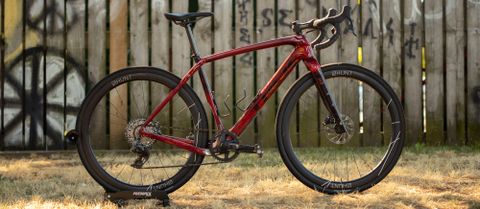

Cyclingnews Verdict
If you can only have one bike, the Trek Checkpoint SL6 eTap is a serious contender. It’s the kind of bike that just works. You can upgrade it if you want to but you don’t need to. There are mounts for mudguards and bags, and with only a tyre change it will transition from a comfortable road bike to a capable off-road partner.
SRAM Rival AXS is the perfect groupset for an all-arounder
Mud-guard mounts
Mounting points for every bag you can think of
Non-proprietary seat-post provides options
Internal storage is convenient
Downtube protection eases worry
Threaded bottom bracket
Ideal all-around gearing
Short stem for added stability means handlebar/knee interference
Lacks included protection for the chain stay
Detail behind the fork steerer collects water and is difficult to clean
You can trust Cyclingnews Our experts spend countless hours testing cycling tech and will always share honest, unbiased advice to help you choose. Find out more about how we test.
There's a cadre of people who get really far out into adventure riding that it's basically a small step away from needing a mountain bike. There are also lots of people who want the absolute fastest road bike available. Those ends of the spectrum don't represent the vast majority of riders though. Most people have a lot less focus and need a good, versatile bike that just works. We included the Trek Checkpoint on our list of the best gravel bikes available because that's exactly what you get, a bike that just works.
The Trek Checkpoint is a bike that I have held onto for close to a year. It carried me across thousands of miles and all kinds of weather. I've had adventures on and off the road and I've put the bike to the test in every type of riding I could think of. After all this time, I'm ready to discuss the experience, what I like about it and where it falls short. If you've been considering a new gravel bike keep reading to see if the Trek Checkpoint is the right choice for you.
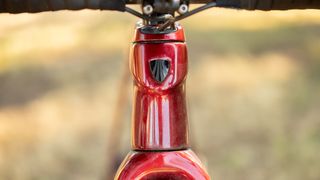
Design and aesthetics
In many ways the Trek Checkpoint is a fairly uncomplicated design. The biggest standout design feature is the rear IsoSpeed decoupler system but even that piece, at least in the SL, sticks to the less complicated version. Trek refers to this version as the "seat tube IsoSpeed" and it refers, as expected, to the seat tube alone. There's no adjustment, nothing to think about, and just an isolation of the seat tube from the structure of the top tube and the seat stays. The end result is a passive suspension design that relies on flex in the 500 series OCLV carbon.
To further exaggerate the effect, there's a prominent cutout near the bottom of the seat tube. The cutout doesn't reroute the tube for better aerodynamics but instead narrows the tube. The narrow point becomes the fulcrum and the rest of the tube has room to move around. If you want to add even more passive suspension, the non-proprietary round seat post means there's plenty of opportunity to take advantage of aftermarket seatposts. Something like the Ergon CF Allroad Pro Carbon seat post is an easy swap, further emphasising how uncomplicated the design of the Checkpoint is.
There are a few other smart little design features as well. Details that continue to keep it simple but functional like the in-frame storage. Behind the water bottle mounts on the downtube is a lever that opens up a space at least as big as your typical flat repair kit. There's a bag that makes sure anything in the space doesn't rattle and the back of the door has room for the Bontrager Bits Multi-tool.
On the other side of the down tube is where you'll find the carbon armour. This amounts to plastic cladding permanently attached to the lower section of the downtube. It's once again simple but important. Unfortunately, there's no matching armour on the rear chain stay but what you will find is a water bottle mount in the carbon armour.
The under-the-downtube water bottle mount is just the tip of the iceberg when it comes to mounting points. There are two standard water bottle mounts, that one under the downtube, and an extra three mounting points higher up the downtube. If you aren't running frame bags that's room for an extra water bottle but there are also three mounting points under the top tube. The Bontrager adventure frame pack, on our list of the best bikepacking bags , will attach to the frame without straps using these mounting points. That still leaves an extra pair of mounting points on the upper portion of the top tube for a bolt-on top tube pack.
The SL version of the Trek Checkpoints goes even farther with mounting options. While the SLR build gets the lighter 700 series OCLV carbon it also does with "only" the fourteen frame mounting points. Sticking to the SL models means there are also three extra mounting points on each side of the fork. Both models also have the option of fitting real mudguards and the Bontrager NCS Alloy Fender Set is one of best out there although there are also other options on our list of the best mudguards .
Like the design features, the aesthetics of the Checkpoint differ a bit throughout the lineup. The top-shelf SLR 6, 7, and 9 are where you'll find the most colour options while lower down the line the ALR and SL models have only one or two colours depending on the specific build. In the case of the SL 6 eTap here, the only colour available is a deep red Crimson/Carbon Red Smoke that dips the bulk of the frame in a rich high-gloss blood red. There are metallic flakes throughout and a geometric pattern at the downtube and forks with a few details in a darker smoked red.
The Trek Checkpoint lineup is extensive to the point of confusion. Right now, there are 12 different models listed with three frames serving as the building blocks. Serving as the entry-level models, the aluminium ALR frameset gives less expensive options with two builds before moving up to the carbon SL models. All using the same 500 series OCLV carbon, the SL models have three builds. These are less expensive than the SLR models but also focused more squarely on bikepacking with additional fork mounts. At the top of the lineup, the four SLR models switch to the lighter 700 series OCLV carbon and they also lose the fork mounting points.
The SL 6 eTap that we spent our time with represents a middle-of-the-lineup option and costs less than half the price of the top model. The groupset is SRAM Rival AXS with 12 gears across a 10-44 cassette and a 40-tooth front crankset. The frame works with 1x or 2x but if you want a front derailleur you'll have to decide if you'd prefer to move up or down. Down drops to 11-speed GRX while up gets SRAM Force AXS Wide but also packages carbon wheels and represents a significant price jump.
Instead of the carbon wheels on the more expensive SL 7 eTap, the 6 comes with the alloy Bontrager Paradigm Comp wheelset. While not a particularly high-end wheel these check all the boxes with a centre lock disc interface, 25mm internal width, and tubeless compatibility. Thru axles are standard bolt-through in 12x142 and 12x100 and the included tyres are Bontrager GR1 Team issue in a conservative 700x40mm width. There is space for up to a 45mm tyre if you find yourself looking for more off-road capability.
For the touchpoints, expect Bontrager pieces. The saddle is a short nose Bontrager Verse Comp with steel rails and it's supported by is a 27.2mm carbon piece also from Bontrager. At the front of the bike the bars are the rather unique Bontrager Elite Gravel bars that we feature in our best gravel handlebars list. They have an integrated foam padding to help ease the rough roads and come paired with a shorter than standard Bontrager alloy stem.
Performance
As a journalist who writes about cycling technology, I have an attraction to exotic tech in bikes. The new Trek Madone with a chunk missing from the seatpost sounds interesting. Or, if we are talking gravel, maybe a single-sided Lefty suspension fork like the Cannondale Topstone I previously spent time on. The wilder the better for me both because of my job and because that's my personality.
The problem is that those kinds of bikes can be difficult to live with. The higher the integration and the more proprietary the pieces, the bigger the challenge. For example, the Lefty fork is amazing at what it does but if I want to drive to a ride with a friend I have to ask what kind of rack they have. If it's a fork-mounted version, then it won't work for me.
Then there's the Trek Checkpoint SL 6 eTap and its distinct lack of fancy technology. On paper, it's almost a boring bike but when people ask me for a bike recommendation, it's often my go-to choice. There are mounts everywhere, including for mudguards and it will do whatever you ask of it. I got the Checkpoint, added Garmin power pedals and swapped the saddle to an Ergon SR Allroad Core Pro, and proceeded to ride it for thousands of miles without ever having an issue. When winter hit, I added mudguards and rode through the winter spending seven hours at a time in constant rain every weekend. I never once had to mess with seat post issues or creaky bearings, everything just worked.
I changed wheels and handlebars because I was testing things but the stock pieces were fine. The groupset in particular is a highlight and has become my gold standard example of why 1x12 might make sense for everyone. Rival has worked flawlessly and while 11-speed 1x gearing occasionally leaves me searching for gears, 1x12 has everything I need. The 40-tooth front and 44 rear works for climbing on loose surfaces, even with a loaded bike, but has plenty of gearing for road riding too. Every now and then I spin out when descending and chasing someone but it's rare and I prefer to have the climbing gears.
When asked, I tell people you can walk out of the store with an SL 6 eTap and there's nothing you need to swap. The wheels aren't light, or fancy, but they work just fine. Same with everything else except the stem. One of the headline details about the Trek Checkpoint is the geometry that uses a short stem and a long wheelbase and right away I found it annoying. I swapped to the Trek RSL stem in a 100mm length as soon as possible. I noticed no lack of stability but I did stop banging my knees on every hill.
Other than the stem, the Checkpoint has never left me asking for more. During the winter I would come home freezing and drenched with a bike caked in mud. I didn't wash the bike and at one point the brakes only alerted me to an issue when the pads ground down to the metal backing. Despite the lack of maintenance the groupset, wheels, and frame haven't needed anything. If I want to go bikepacking, I will never need to get creative with mounting. If I want to use the Checkpoint as a road bike, a tyre swap will have it ready to go.
There are bikes that excel at a particular thing. You can get as specialised as you want in whatever area appeals to you and you can collect a quiver of bikes that you choose between depending on what's on the menu that day. Or you could get a bike like the Trek Checkpoint SL 6 eTap that just works no matter what you want to do.
The Checkpoint might be a gravel bike but that's far from all it offers. Swap to a 28 or 30mm tyre for road riding and it's perfectly capable of keeping up with whatever group you want to ride with. If a summer gravel race catches your eye, swap on a 40mm tyre and only your legs will keep you off the podium. For a more relaxed pace bikepacking weekend, a 45mm tire might be a good option and you can load up all the mounts with every bag you can think of.
The only real question is which of the many build options makes sense. The SLR frameset is lighter but it's also a lot more expensive and it lacks mounting points on the fork. The SL 5 build gets you all the mounting points at a lower price but it’s also an 11-speed mechanical build with narrower wheels. If you are looking to save money look to the aluminium frameset options and if you've got a bit more money to invest, the Trek Checkpoint SL 6 eTap represents a do it all bike that balances price and performance.
Logbook: Trek Checkpoint SL6 eTap
- Temperature: .5-38 degrees C / 33-100 degrees F
- Weather: Anything you can ride in
- Road surface: paved roads, unpaved roads, and double track
- Rides: many
- Mileage: 2778km / 1726 miles
Tech Specs: Trek Checkpoint SL6 eTap
- Price: £4,000.00 / $4,499.99 / €4,449.00 / $5699.99 AUS
- Frame: 500 Series OCLV Carbon, IsoSpeed, internal cable routing, downtube storage door, 3S chain keeper, T47 BB, rack and fender/mudguard mounts, integrated frame bag mounts, flat mount disc, dropper post compatible, 142x12mm thru axle
- Weight: 9.05 kg / 19.96 lbs claimed for size 56
- Groupset: SRAM RIVAL XPLR AXS
- Crankset: SRAM Rival XPLR crank; 40T
- Cassette: SRAM Rival XPLR 10-44T
- Wheels: Bontrager Paradigm Comp 25, Tubeless Ready, 25mm rim width
- Handlebar: Bontrager Elite Gravel, 42cm width
- Stem: Bontrager Pro, 31.8mm, Blendr compatible, 7 degree, 80mm length
- Seatpost: Bontrager carbon, 27.2mm, 8mm offset, 330mm length
- Saddle: Bontrager P3 Verse Comp, steel rails, 145mm width
- Tyres: Bontrager GR1 Team Issue, Tubeless Ready, 700x40c
- Max tire size: 700x45c / 650x2.1"

Thank you for reading 5 articles in the past 30 days*
Join now for unlimited access
Enjoy your first month for just £1 / $1 / €1
*Read any 5 articles for free in each 30-day period, this automatically resets
After your trial you will be billed £4.99 $7.99 €5.99 per month, cancel anytime. Or sign up for one year for just £49 $79 €59

Try your first month for just £1 / $1 / €1

Josh hails from the Pacific Northwest of the United States but would prefer riding through the desert than the rain. He will happily talk for hours about the minutiae of cycling tech but also has an understanding that most people just want things to work. He is a road cyclist at heart and doesn't care much if those roads are paved, dirt, or digital. Although he rarely races, if you ask him to ride from sunrise to sunset the answer will be yes. Height: 5'9" Weight: 140 lb. Rides: Salsa Warbird, Cannondale CAAD9, Enve Melee, Look 795 Blade RS, Priority Continuum Onyx
New disc brake-equipped Giant Trinity TT bike spotted at Tour de Romandie
POC Aspire cycling glasses review: A sturdy and stylish modern classic
A team on fire - Ben O'Connor leads Decathlon AG2R's search for more success at Giro d'Italia
Most Popular
- MAGAZINE OFFERS
- BIKE INSURANCE
- Best Products
- Maintenance
- Accessories
- Long-Term Reviews
- BikeRadar Podcast
- First Look Friday
- Bike of the Week
- Tech Features
- Routes and Rides
- Bike Galleries
- BikeRadar Bargains
- Buyer's Guides
- Fitness & Training
- Sizing & Fit
- Mountain Biking UK
- Cycling Plus
Trek Checkpoint SL6 review
Trek Points
Robert Smith
Robin Wilmott
Fully-featured, practical frameset, IsoSpeed, carbon wheelset
I’d prefer to have 40mm tyres supplied
Trek’s Checkpoint SL6 gravel bike is the natural evolution of its Domane road bike and Boone cyclocross bike. In profile it could be mistaken for either, but look closely at the stealthy black frameset, and the differences become clear.
- The Trek Checkpoint SL6 is one of our Bike of the Year bikes for 2019. To read reviews of the other contenders and the categories tested across road, mountain and women's bikes, visit our Bike of the Year hub page .
The fork has a gentle curve, with its thru-axle offset just behind the fork’s centre line to gain a little compliance, and it has mudguard and rack mounts.
The semi-compact frame includes a rear IsoSpeed decoupler, and large down tube, with Trek’s Control Freak internal cable routing system, which gathers up the cables and rear brake hose in one port on top of the tube. Beneath it, a polymer impact guard covers the lower portion of the down tube and extends along the chainstays too, punctuated only by an additional bottle cage mount.
- Top 5 gravel bikes
- Trek goes all in on gravel with Checkpoint
Deviating hugely from the Boone and Domane, the Checkpoint’s rear end has a heavily dropped, intricately shaped driveside chainstay to permit extra tyre clearance and the double chainset. The square seatstays bow gently upwards, have a bridge, and well-hidden mudguard and rack mounts, and end in Trek’s Stranglehold dropouts. These feature slots and screw-in adjusters that allow the wheelbase to be altered by sliding the captive thru-axles by up to 20mm.
The lower seat tube is shaped to increase tyre clearance, which the dropouts help to tune, but if singlespeed is your bag, they’re also essential for chain tension adjustment.
Although supplied with 35mm Schwalbe G-One Allround tyres, the Checkpoint can run up to 40mm (measured) rubber, giving 4mm frame clearance. The asymmetric seat tube is offset for the front mech and Trek’s 3S chain keeper, which perches above the BB90 bottom bracket shell to prevent chain suck.
Frame sealing and storage are impressively practical. My 56cm frame has options for two bottle cages within the main triangle, as well as one below and the usual seat tube cage, and above the top tube are fittings for an easy-access storage pouch. Trek’s Ride Tuned seatmast cap means no seat tube cutting, and because the seatmast telescopes over it, it’s totally sealed against filth.
Trek Checkpoint SL6 ride impressions
What’s immediately apparent is how smooth the Checkpoint SL6 feels. With 40psi in the 35mm tyres, it glides across tarmac with road bike-like speed and feel, the closely-spaced, shallow, round tread blocks rolling almost imperceptibly, with plenty of grip.
Great frame stiffness and the light, shallow and wide Paradigm Comp carbon wheelset make for responsive, quick acceleration that help you cover ground surprisingly fast.
Leaving roads behind, the Checkpoint transitions easily to rougher surfaces, the rear IsoSpeed decoupler really coming into play. The suspended feel it gives through the saddle over washboard gravel and uneven surfaces is impressive, although the bike’s front end doesn’t quite match its ability.
Concerns that the Ultegra drivetrain might be overgeared were soon dispelled
The fork works hard to soak up the bumps, but the handlebar adds nearly as much, together keeping things composed and totally controlled.
The Montrose saddle proved supportive and comfy enough, and despite needing to reign the speed in a little on the slick mud and loose off-cambers, the Schwalbes coped very well.
With some 40mm tyres fitted and run tubeless, grip and off-road ability would be even greater without costing too much road speed. Trek has been quite conservative here, perhaps aiming to lure in roadies, to whom 35mm tyres are already quite a leap, but the Checkpoint’s potential is there to be tuned or exploited in a way that suits you.
Concerns that the Ultegra drivetrain might be overgeared were soon dispelled. The 50/34 compact chainset and 11-34 cassette still allow a 1:1 climbing gear, and more than enough road speed, and the gear jumps are small.
Again, it does lean towards faster terrain, which is generally a feature of American gravel riding. The British equivalent can often be slower, rougher and more fiddly, and when riding on the big ring, I often found myself with a less than ideal chainline. But despite the mud and rocks, I had no dropped chains.
Comparing the geometry to the Boone gives a further steer as to the bike’s intentions. The head angle is a little steeper, while the head tube on my model is 12mm shorter. The top tube is longer, the bottom bracket drop 8mm lower, but the wheelbase of both bikes remains the same, thanks to less fork trail and greater offset on the Checkpoint.
It’s a great balance between crisp, high-speed steering and stable, low-speed control, but always favouring quicker terrain. With its assorted mounts for drinks, spares and gear, the Checkpoint is hugely versatile and can be willingly pressed in to service as a weekend gravel racer, backroads explorer, bike packer, winter trainer or luxury commuter.
Whatever road or trail you choose, this Trek is all about speed.
Trek Checkpoint SL6 specifications
- Sizes (*tested): 49, 52, 54, 56*, 58, 61
- Weight: 8.9kg
- Frame: 500 Series OCLV carbon, rear IsoSpeed, Stranglehold dropouts
- Fork: Checkpoint carbon disc
- Chainset: Shimano Ultegra 50/34
- Bottom bracket: BB90
- Cassette: Shimano Ultegra 11-34
- Chain: Shimano HG600
- Derailleurs: Shimano HG600
- Gear levers: Shimano Ultegra hydraulic
- Wheels: Bontrager Paradigm Comp tubeless-ready
- Tyres: Schwalbe G-One Allround 35mm
- Stem: Bontrager Elite alloy
- Handlebar: Bontrager RL IsoZone VR-CF
- Headset: Integrated, sealed 1 1/4in – 1 1/2in
- Saddle: Bontrager Montrose Comp
- Seatpost: Bontrager Ride Tuned carbon seatmast cap
- Brakes: Shimano Ultegra hydraulic disc, 160mm rotors
Trek Checkpoint SL6 geometry
- Seat angle: 73 degrees
- Head angle: 72.2 degrees
- Chainstay: 42.5cm
- Seat tube: 56cm
- Top tube: 56.6cm
- Head tube: 14.5cm
- Fork offset: 4.9cm
- Trail: 6.1cm
- Bottom bracket drop: 7.6cm
- Wheelbase: 1,020mm
- Stack: 58.6cm
- Reach: 38.7cm
- Price: £3,400 / US$4,000 / AU$4,699
BikeRadar would like to thank Stolen Goat , Lazer , Northwave and Effetto Mariposa for their help and support during our Bike of the Year test.
Share this article

Contributor

- Terms & Conditions
- Subscribe to our magazines
- Manage preferences
Trek Checkpoint SL 6 AXS review – all-round gravel machine
Trek’s checkpoint has unique progressive geometry and scissor frame features and all the mount points you could want. but is it a multi-surface, multi-mission master or a complicated compromise.
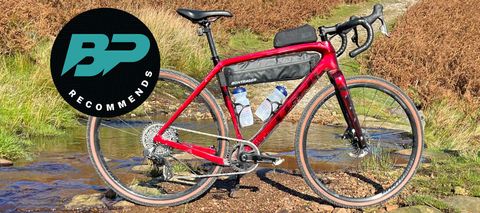
BikePerfect Verdict
Genuinely ride improving IsoPulse frame tech with unique handling that’s happy from road rides to rough bikepacking, plus tons of mount points and a sweet spot spec list make the Checkpoint SL 6 an excellent, easy yet efficient choice for whatever you want gravel to be.
IsoPulse Decoupler is a significant ride smoother
Well balanced road or rough handling
Efficient speed on all surfaces
SL 6 model is a real performance for price sweet spot
Saddle is a bit squishy on longer rides
Many mounts mean slightly more mass
Controls go through the headset
Non removable front mech tab
Rough rear hub
Why trust BikePerfect Our cycling experts have decades of testing experience. We'll always share our unbiased opinions on bikes and gear. Find out more about how we test.
Trek’s second generation Checkpoint gravel bike has a unique, ride smoothing scissor frame design, confidently controlled handling, internal storage plus lots of clever external cargo fittings including custom bags. The SL 6 looks like a sweet spot in terms of performance for price too. I have been getting the multi-surface miles in to see how the Checkpoint checks out as an all-round race and adventure candidate.

Design and geometry
The first impression of the Checkpoint SL is what a chunky frame it is. The massive downtube leaves plenty of storage space under the latched hatch though and together with the broad seat tube means full width support of the oversized T47 bottom bracket. The broad rectangular top tube gives plenty of real estate for bolt on bags above and below it. It also hugs round the head tube to create a deep brow below the upper segment that turns with the bars and acts as entry point to the internal control routing. The deeply dropped asymmetric stays are chunky too and even the seat stays are sturdy pieces by modern ‘flexy and friendly’ standards.
Normally this would read like a classic recipe for a horribly rigid ride, but hiding under the pop out servicing panels at the tope tube/seat stay/seat tube junction is a skewering pivot axle. This ‘IsoSpeed Decoupler’ lets the seat tube flex back and forth above and below (where the tube is dramatically scooped out) the axis of the pivot for an impressively smooth ride in the saddle but a very stiff feel underfoot. Specific variations of the theme have been used successfully right across Trek’s road, CX, MTB and gravel ranges for a while too.
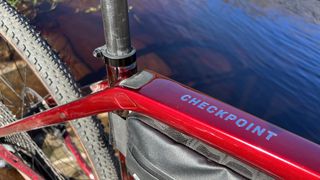
As well as the internal space and top tube mounts, there are four bottle cage positions, hidden fender mounts, less hidden frame mounts and the mandatory triple holes down each carbon fork leg for whatever you want to bolt/strap on. There’s a steel scuff plate behind the chainring (maximum size 46T) plastic armor on the belly and an adjustable chain keeper. There’s ample space for 700 x 45mm or 650 x 52mm (27.5 x 2.1in) tires in frame and fork too. The only glitch is the redundant but irremovable front mech mount sticking awkwardly out from the seat tube.
OCLV 500 is Trek’s mid price, mid weight carbon composite option with a claimed 56cm painted frame weight of 1480g and a fork weight of 501g. This makes it heavier than the Checkpoint SLR chassis, but that’s not available separately, while the SL is $2,399 / £2,500 / €2,699
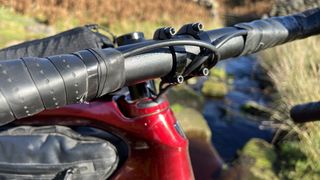
Components and build
As the model name suggests, the SL6 gets SRAM’s AXS wireless gear set up. It’s the lower/mid tier Rival group with an alloy crank (the SL7 AXS gets Force and carbon wheels) with a 40T chainring matched to a 10-44 tooth XPLR cassette. The bottom bracket is the latest T47 standard. Shifters and hydraulic disc brakes are Rival too, with 160mm rotors for decent stopping power.
Bontrager Paradigm Comp wheels use alloy 25mm wide rims with hard plastic tubeless sealing strips for long term durability. Stock bikes come with Bontrager GR1 Team Issue tires but my sample bike was running Pirelli Cinturato Gravel M Classic tires in the same 40mm width. The Bontrager Switch thru-axle has a removable lever with 4 and 5mm Allen keys in the tip too. The non-adjustable rear hub bearings were sounding super rough and wobbling within a few days of riding though.
Bontrager supply all the finishing kit including a carbon seat post and a particularly squishy saddle. All the contact points are size specific with different crank lengths from 165mm to 175mm, 38 - 46cm bars and 70 - 100mm stems depending on frame size. You get a wider saddle on 49 and 52cm bikes as well.
Complete bike weight of our 56cm test bike with bottle cages and internal storage sleeves but no pedals was 9.3kg. The price compares well to other carbon gravel bikes with internal storage like the Specialized Diverge and Santa Cruz Stigmata too although It’s worth noting that the same bike (identical apart from a moss green finish) has just appeared on the Trek UK website for only £4,300 and I imagine other territories will update soon.
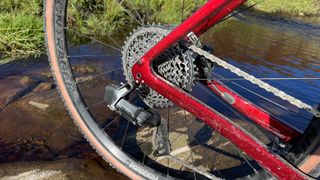
Ride, handling and performance
There’s two main things to talk about with the Checkpoint that are unique to this bike – the IsoSpeed Decoupler and the ‘progressive’ handling. It’s certainly not unique in saying it has ‘progressive’ handling but Trek do it different. Rather than slackening the head angle in an MTB style, they’ve kept it road bike steep (72.2 degrees on my 56cm test bike) but reduced the rake (angle between a vertical line through the centre of the hub/tire contact patch versus the hub and steering centers – aka headset – of the frame) of the fork. In one sense this makes it more responsive through the bars and Trek have amplified that by using a shorter stem than normal. However, the smaller rake means a longer trail figure (distance between that vertical line through the hub centre/tire contact patch). That means the front wheel ‘castors’ more strongly so it wants to stay straight and the bike needs more effort to get it to change direction. Trek have also lengthened the reach by 20mm on average and added 10mm to the rear centre so you’re getting significantly more stability that way too.
Overall then you’re getting a more resolute, ‘I’ll keep going straight rather than freaking out and tripping up’ character than average on the Checkpoint through rough, rooty or loose rock situations – while still having a light and sensitive steering feel. Its definitely subtly different to something like the Santa Cruz Stigmata where the head angle has been slackened dramatically MTB style. That manifests in a keener, more reactive feel through the bars on Checkpoint on climbs and in slow speed situations. That’s emphasised by an already slack seat angle that gets even slacker as the seat post bows backwards under high torque / low revs effort so you’re balancing between alert accuracy and popping the front wheel up and losing control at extremes. It’s not quite as planted through fast, drifting turns as the Stigmata (my current ‘gravel speedway’ benchmark) as you can provoke it to twitch and tweak at the limit. It feels less sluggish and barge like on the road than a slacked out bike though. The deeper than average (for gravel at least) drop on the bars and fast rolling tires also gives a more ‘all-road’ vibe. So if you’re likely to run fast tires or even invest in a separate set of road wheels rather than fit a dropper post and knobbly rubber, then the Checkpoint is a really effective and enjoyable balance.
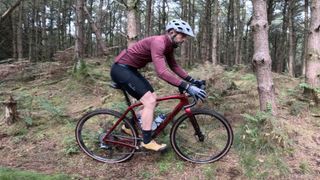
That’s not to say it’s not very smooth and capable on rougher terrain though because the IsoSpeed tech really does work well. Not as obviously as a suspension seatpost, but in a more organic ‘smoothes the sharp edges and slap sting off roots and rocks’ sense that feels a lot like running much bigger tires than you are in terms of both comfort and traction. Fore and aft flux means it can feel a little ‘rounded off’ when pedaling hard in the saddle, but stand up and there’s clearly a very solid and purposeful drive delivery to the back wheel. The back wheel still carves and cuts cleanly rather than writhing across it’s axis if you’re pushing hard through turns or off cambers too.
While Trek have abandoned their front end IsoSpeed tech, the fork is similarly smooth and forgiving without slurring tracking so there’s no ‘game of two halves’ mismatch to unsettle the handling. The Bontrager Elite Gravel bars have rubber padding embedded in their top surface for a bit of extra comfort and the squidgy saddle plays it’s part in isolating the trail. The fact it’s still an active tracking and laterally stiff bike is obvious and welcome when you’re tackling singletrack or sketchy descents while loaded up for a few days of bikepacking. Even a full size seatpack rammed with a tent, stove and a couple of campsite tinnies didn’t set up any weird harmonics or wriggle at speed and knowing the top tube bags are physically bolted into place adds mental and mechanical confidence too.
The 160mm brake rotors both ends and 44 tooth largest cog on the XPLR cassette are welcome when loaded too and as usual the Rival AXS set up was totally trouble free through an extensive test period. Apart from the premature death of the bearings in the rear hub the Bontrager wheels seem tough, but a lighter set would definitely pep up the dutiful rather than dynamic accelerating character of the SL 6.
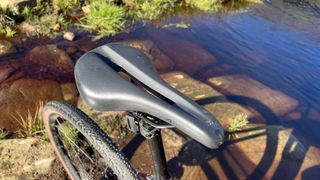
Trek like doing things differently and there’s definitely a lot of distinctive features to the Checkpoint. The result never feels weird though, just a great balance of smoothness, assured but not dull handling and efficient yet comfortable speed across a wide range of surfaces. It’s ready to have pretty much any accessory from dedicated bags to commuting fenders bolted on too.
While you can go lighter with the SLR frames, fancier with the various pricier SL models, or cheaper with the alloy ALR models, the SL 6 is a definite sweet spot pick. It's full of wireless functionality, carbon frame and proportionately sized componentry without paying any more than you need to. And if you can invest later it’s definitely a frame worth upgrading not least because it’s blend of 'feels good on the road' and when loaded up for wilderness bikepacking (as well as everything in between) makes it very versatile.
Test conditions
- Surface: Gravel, road, roots, rocks, mud, sand, grass singletrack, mixed farm tracks
- Trails: Moorland tracks, forest fire roads, actual roads, rocky rural roads, natural woodland singletrack.
- Weather: Dry to drizzle. (5 – 15 C)
Tech specs: Trek Checkpoint SL 6 AXS
- Discipline: Gravel Race/Adventure
- Price: $4,299 / £4,450 / €4,799
- Head angle: 67.5 degrees
- Frame material: 500 Series OCLV carbon fibre
- Fork: Trek Checkpoint, full carbon
- Sizes: 49, 52, 54, 56 (tested), 58, 61cm
- Weight: 9.3kg (56cm model)
- Wheel size: 700c
- Chainset: SRAM Rival, 40T, 172.5mm chainset with DUB Wide T47 bottom bracket.
- Rear mech: SRAM Rival XPLR eTap AXS wireless
- Shifter: SRAM Rival eTap AXS, 12-speed wireless
- Cassette: SRAM XG-1251, 10-44T, 12-speed
- Brakes: SRAM Rival hydraulic disc with SRAM Paceline 160mm rotors.
- Tires: Pirelli Cinturato Gravel M Classic 700 x 40mm tires
- Wheels: Bontrager Paradigm Comp 25 alloy
- Bars: Bontrager Elite Gravel, 31.8 x 42 cm
- Stem: Bontrager Pro, 31.8 mm, Blendr-compatible, 7-degree, 90 mm length
- Seatpost: Bontrager carbon, 27.2 mm
- Saddle: Bontrager Verse Comp, steel rails, 145 mm width

Guy has been working on Bike Perfect since we launched in 2019. Hatched in Yorkshire he's been hardened by riding round it in all weathers since he was a kid. He spent a few years working in bike shops and warehouses before starting writing and testing for bike mags in 1996. Since then he’s written several million words about several thousand test bikes and a ridiculous amount of riding gear. To make sure he rarely sleeps and to fund his custom tandem habit, he’s also penned a handful of bike-related books and talks to a GoPro for YouTube, too.
Current rides: Cervelo ZFS-5, Forbidden Druid V2, Specialized Chisel, custom Nicolai enduro tandem, Landescape/Swallow custom gravel tandem
Height: 180cm
Weight: 69kg
Manitou Mezzer Pro MTB fork review – smooth, lightweight and excellent tuning options
Lewis LH4 Brake Set review – an eerily familiar looking brake
Is Rotor's Kapic crankset and oval Q Ring setup pedaling perfection, or did it leave me riding all out of shape?
Most Popular
SORT CONTENT BY LOCATION
CLICK TO DRILL DOWN BY COUNTRY/PROVINCE
Your browser is ancient! Upgrade to a different browser or install Google Chrome Frame to experience this site.
Inspiration
- Bikepacking 101
- Join/Support

- View Latest/All
- Bikepacking Videos
- Your Stories
- Rider's Lens
- Field Trips
Popular Tags
- #bikerafting
- #Tour-Divide
- #family-bikepacking
- #winter-bikepacking
- #1Q5V (1 Question 5 Voices)
Gear/Reviews
- Bikepacking Bags
- Camping Gear
- Accessories
- #Editors-Dozen (Our Favorite Gear)
- #Gear-of-the-Year
- #MYOBG (DIY)
- #Decade-in-Review (Best of All Time)
The Gear Index
Latest indexes.
- Mini Panniers
- Saddlebags & Top Openers
- Cargo Cages & Anything Bags
- Gravel Bars
- Drop Bar 29ers
Bikepacking Bikes
- Rigid & Plus Bikes
- Drop-bar & Gravel
- Full Suspension
Rigs & Roundups
- Rider & Rig
- Race/Event Rig Roundups
- Worthy Builds
- Handbuilt Bikes
- #29+ (29-plus)
- #vintage-mountain-bikes
- #cargo-bikes
- Readers' Rigs (Dispatch)
- New Bikes (Dispatch)
Plan Your Trip
- Bikepacking Guides
- Bikepacking Food
- Gear & Pack Lists
- Bike Photography
Essential Reading
- Leave No Trace (for Bikepackers)
- Guide To Bikepacking Bags
- Bikepacking Gear That Lasts
- #Bikepacking-Awards
- Power Of An Overnighter
- Advice For New Bikepackers
- Our Favorite Bikepacking Routes
-
Where to Begin
We have over 300 original and curated bikepacking routes in our global network spanning nearly 50 countries.

Start at our worldwide routes map to dig into our detailed guides with GPS maps and inspiring photography.
By Location
- The United States
- Latin America
- Middle East
By Length (days)
- Overnighters & S24O
- Weekend Routes (2-4)
- Week-long Routes (5-10)
- Odyssey Routes (11-30)
- "Freakouts" (31+)
Local Overnighters
The Local Overnighters Project is a unified effort to document and map one-night bikepacking routes all over the world—by locals, in their own backyards.
The Bikepacking Journal is our biannual printed publication. Each issue features a collection of inspiring writing and beautiful photography. Find details on the three most recent issues below, join the Bikepacking Collective to get it in the mail (anywhere in the world), or click here to find a collection of selected stories in digital format.

The special edition 10th issue of The Bikepacking Journal is one you won’t want to miss! It features 25% more pages with extra stories, bonus art and maps, and much more...

Issue 09 takes readers on trips through time—one to the early days of bicycles—and offers several reminders to be grateful for supportive friends and family, and strangers we meet along the way...

For Issue 08, we invited several contributors to return and pick up where earlier trips and ideas left off and also feature a handful of first-timers whose perspectives we’ve long been eager to share...

Trek Checkpoint Review (SL6): Dirt Road Rocketry

Joe spent a few weeks with Trek’s Checkpoint SL6 to run it through challenges ranging from the weekly fast roadie coffee shop ride to a ten-hour dirt randonee to local gravel and singletrack explorations. Is this go-fast bike the bridge between a svelte carbon road machine and a lumbering gravel tourer?

Trek isn’t always first to the party anymore, but no one can deny their substantial bicycle history credentials. From the 520/720 tourers of the 1970s to early production 29ers under the Gary Fisher moniker to turn-of-the-century OCLV 5200s, Trek has innovated and produced coveted rides. The recent introduction of the Stache and the 1120 bikepacking specific rig—reviewed here last February—suggests that Trek still wants to be in the conversation. Whatever one thinks of those particular wheels, the designs aren’t a lazy copy of someone else’s work.
- Quick Highlights
- Angles (56cm): 72.2° Head tube, 73° Seat tube
- Chainstay: 425mm
- Bottom Bracket: PRESS FIT BB90
- Hub specs: 12X142MM / 12X100MM Thru-Axle
- Max tire size: 700C x 45mm
The Checkpoint SL is Trek’s take on a carbon high performance drop bar bike with dual front chainrings and clearance for 45mm tires on 700c wheels. It’s available as a frameset or with Shimano Ultegra or 105, which are the SL6 and the SL5 respectively. The SL5 is available in women’s and men’s versions, though the only difference is the saddle and color. All the Checkpoint SLs feature Trek’s IsoSpeed decoupler at the seat tube/top tube junction. The idea is to separate those two tubes so that the seat tube can move with the plane of the bike to reduce jolts from the rear wheel.
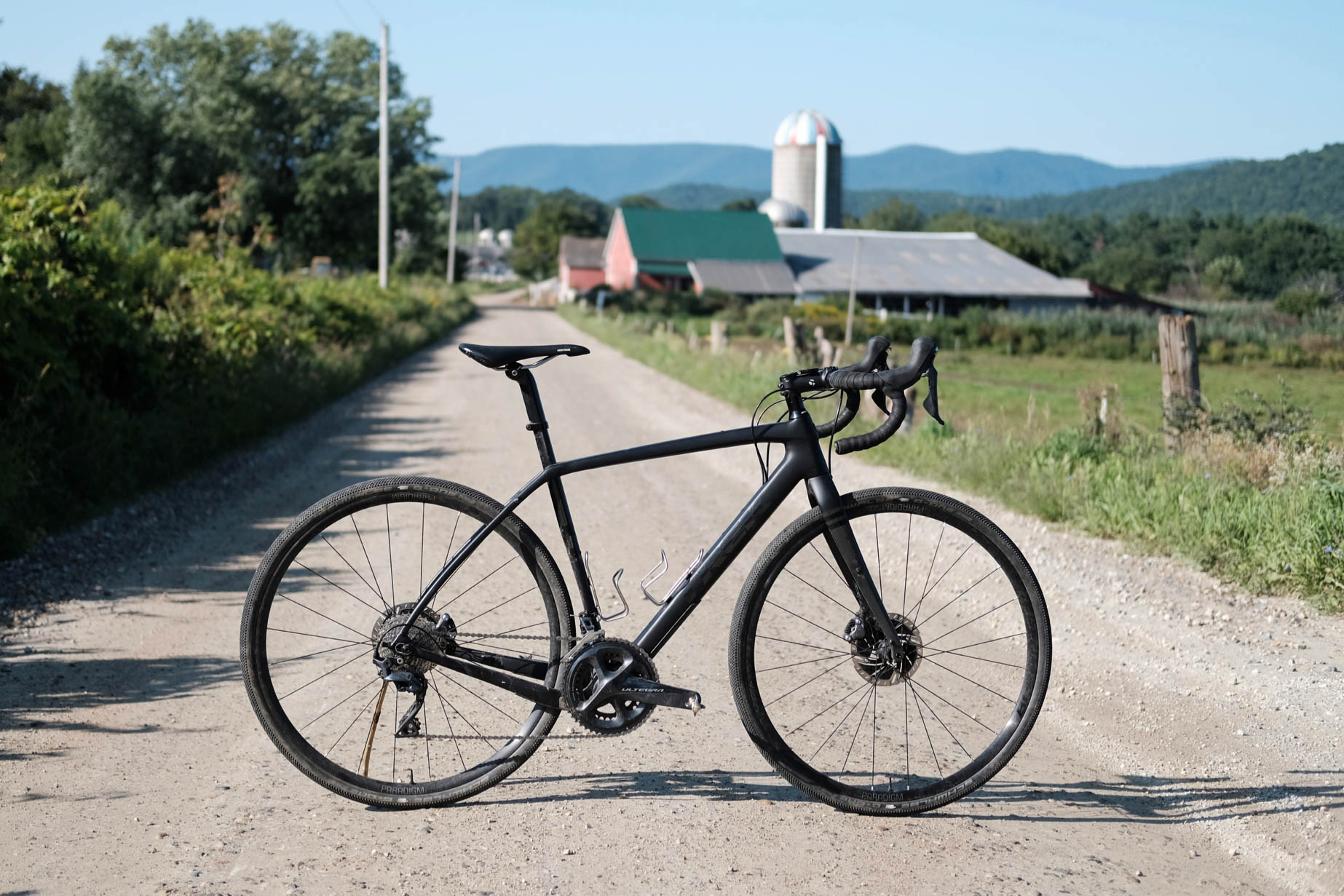
My dominant impression of the Checkpoint is that it feels like a race-craving road bike. All of the cues are there: the position, the look, the instant feedback from input, and the no-flex ride. A road rider who wants to rail gravel roads at high speed will immediately be at home. The Trek shined when I took it on my local Tuesday night no-holds-barred group ride that is primarily asphalt but also sees plenty of Vermont dirt roads. On the tarmac, the Checkpoint achieves familiar prowess for a contemporary carbon bike: it jumps to task on climbs, it’s snappy to the town lines, and it’s smooth in a paceline. Once off pavement, there’s no need or sense in slowing down, as it still wants to just go. I was impressed by the consistency of this sporty aspect.
I suspect that for someone who isn’t coming from the aesthetic and mandate of road bikes, their reaction to the Checkpoint SL might be more complicated. Firstly, it’s simply not as plush at the front end as many gravel bikes. The narrower tires of the Checkpoint will be run at higher pressure, the stout fork, headtube, and downtube area is designed for precision rather than compliance, and the amount of weight on your hands while on the hoods is perfect for confident descending but reminds you when roads aren’t smooth. Secondly, the Checkpoint handles like a modern road bike in the sense that it takes effortful attention to pilot. In return, it offers quick course correction and a certain nimbleness, but it is not relaxing. It seems as if Trek took everything they knew about road bikes and sought to make a dirt-capable version without wandering too far from the essential format. That is going to have a different valence for different people.

For me, the downside to carbon bikes is that they are a little blunt to ride. There’s heavy subjectivity here, for sure, and it is hard to quantify sensation, but in my experience, excellent carbon bikes feel great—they are wonderful, after all, at mitigating road buzz when tire pressures are high—but not exemplary. Another way to put it is that, to me, there’s a ceiling to the ride quality that can be achieved on a carbon bike that is below that of lightweight steel or ti. This might be because lightweight steel and ti bikes generate a bit of frame oscillation from pedaling, and are more fun to give energy to, and therefore more fun to ride. Still, with their OCLV mastery, Trek achieve an admirable neutral to positive feel from carbon. Carbon fiber is a versatile, reliable material and the Checkpoint is an excellent carbon bike, very much near the top of its genre.
DECOUPLED SEAT TUBE
A stiff carbon bike can be a beautiful tool for a certain job, but it’s never fun to get beaten up by one. Trek’s solution is the IsoSpeed decoupler. It’s a shame that whenever a manufacturer introduces a shock absorbing measure to the back of a road bike shaped bike, it is received as a gimmick. Bike makers haven’t helped themselves since sometimes their approaches are gimmicks, but maybe suspicious consumer attitudes are changing with the wider use of split seatposts and the like. Trek brags that their technology has been proven at Paris-Roubaix, and that it was developed with input from Fabian Cancellara. Sure, bicycles have to get sold someow. I can say, though, that IsoSpeed undoubtedly works. My basis for this claim is riding the Checkpoint on dirt roads that I’ve been riding for 20 years and comparing the feel to my personal carbon bikes with similar tire pressures and widths. The back end of the Checkpoint was as comfortable as any that I’ve experienced on a performance oriented bike.
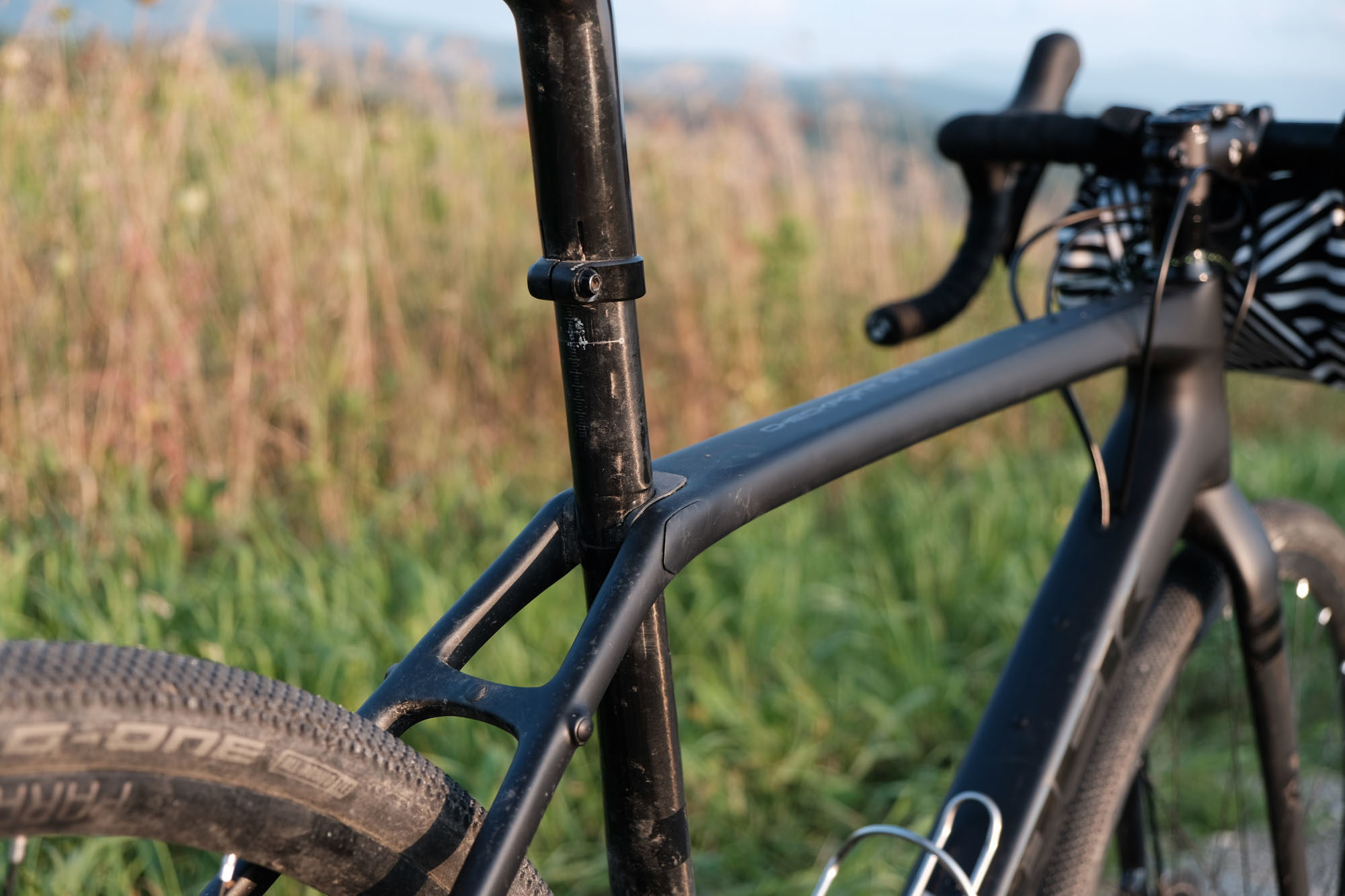
The way IsoSpeed works is that the seat tube is not molded together with the top tube and the top of the two seatstays. Instead, it passes through and is bolted to that junction to create a floating link that allows some give. The top cap that attaches the saddle to the seat tube helps in creating a system that flexes but doesn’t intrude during accelerations and sprints. Just to be clear, even though I’ve been talking about shock absorption, IsoSpeed is not and does not feel like rear suspension. It merely takes up the sharp small hits of rocks over hardpack and it keeps you in the saddle longer on chattering descents.
IsoSpeed in back but not the front does yield an asymmetry that was noticeable on the first few rides. The back end is comparatively cushy whereas the bumps intruded in a more typical way at the front end. Companies like Cannondale have put suspension on the front end of their offerings in this category, and it’s certainly intuitive to do so. In fact, it can seem strange that a bicycle would have rear shock absorption as opposed to front. I wouldn’t be surprised if Trek had a spirited internal debate about whether to include front end IsoSpeed on the Checkpoint, and, judging from pundit reaction, many people think they should have. I think things are less obvious on a performance road bike platform than first appear, though. In my experience, I can readily absorb hits and chatter by keeping my arms loose. Legs are, of course, big springs, too, but when laying down steady power from the saddle, it’s nice to not have to think about unweighting to accommodate rough stuff. IsoSpeed is there for that. Again, the front end of the Checkpoint is stiff and contributes substantially to the race bike sense of quick control. I like that in a bike that is meant to be ridden fast, and I can also appreciate the forgiving IsoSpeed back end.
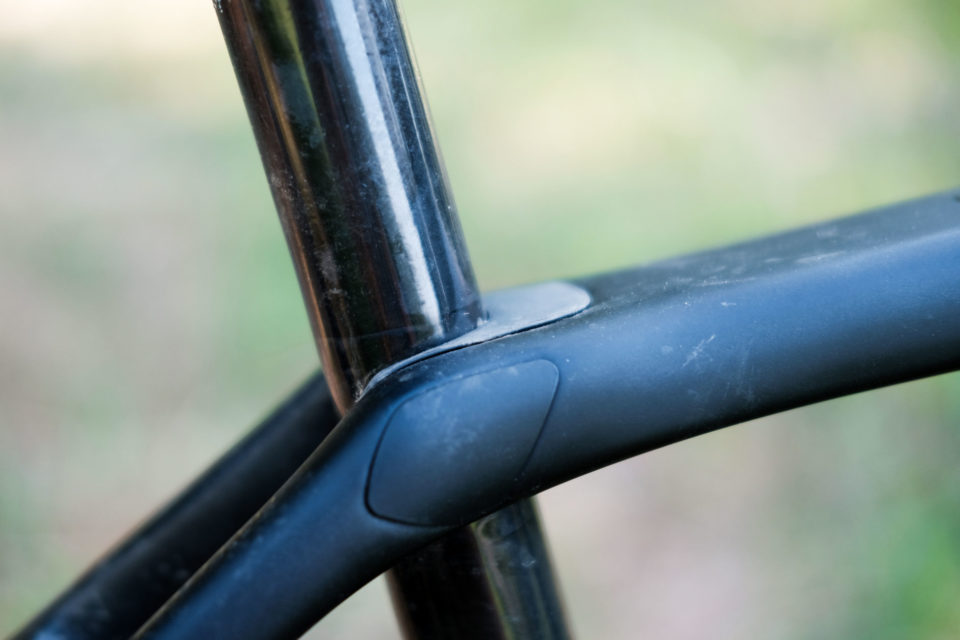
WHAT’S IT FOR?
For pedaling hard with speed and purpose on dirt that isn’t very technical, the Checkpoint is as impressive a carbon bike as I’ve been on. We received the bike right before this year’s edition of D2R2 , one of the OG dirt randonées in New England (and highly recommended, incidentally). The 180k loop traverses the most scenic rolling dirt roads of Western Massachusetts and Southern Vermont. I wouldn’t necessarily recommend this kind of course as the very first ride on an untested bike, but the Checkpoint was brilliant. There are only a few sections of Class IV road that tend slightly in the direction of mountain bikes, and even these were well within the Trek’s comfort window. For pedaling over a hundred miles on dirt while trying to peg a bragging rights time, the Checkpoint is in its sweet spot. More broadly, if a training program and intervals and Strava and mixed terrain fast group rides are your style, you will very likely like this bike.
On the other hand, as one moves away from hurry and racing toward more leisurely camping intensive excursions, the Checkpoint makes less sense. It’s true that it has plenty of carry points. To wit, there are three bottle mounts in the main triangle for size 54 and up, as well as one under the downtube, and one on each fork leg. There are also bosses for a gas tank type bag behind the stem. That gives the bike great potential and flexibility if viewed in the right spirit. Suppose your friends are more into bike camping than you are, but you want to join them for an outing of a couple of nights. You can absolutely do that on the otherwise race oriented Checkpoint. Or suppose you want to mix into your fast riding the occasional rural inn-to-inn tour carrying minimal kit. This is a great platform for that, too. But, really, the Checkpoint doesn’t aim to be an all-rounder when it comes to dirt adventures.
Trek resisted the trend of claiming that 650b wheels with larger tires can be mounted on this 700c bike. They insist that the Checkpoint was designed around the 700c wheels that it is specced with. I appreciate the clarity of not claiming that the bike can be all things, and for the intended purpose of trending in the direction of racing, I think the 700c wheels are a sound choice.

A FEW MORE NOTES
The Checkpoint has a 275 lb/125 kg maximum weight including rider, gear, and bicycle. The bike features Trek’s Stranglehold micro adjustable rear dropouts. This system allows 15mm of fore-aft adjustment of the rear wheel to change the wheelbase and to adapt chainstay length to different tire sizes (Trek recommends a 28mm minimum tire). The dropouts also allow running the Checkpoint as a singlespeed. I experimented with the extremes and settled on the shortest wheelbase for its quickness. Finally, I admire the design and functional details, like the plastic shield under the downtube to protect the frame from rock hits, the metal protector on the dropped driveside chainstay for chainsuck, the smooth bottle boss covers, and the discreet fender mounts.
I haven’t said anything yet about the build on the SL6. Shimano Ultegra is flawless, and on this bike it confirmed again its reputation for shifting smoothness and mechanical refinement. I will note that the Ultegra hydraulic brakes, while very effective both in terms of modulation and stopping, tend to make a persistent scraping sound when the pads pick up mud. On a carbon frame that magnifies sounds, this is annoying. The Bontrager parts are all suitably high end, but the contact points were, for me, a study in contrast. The bars with their deep hooks and wide flat top were incredibly comfortable. The saddle—and my undercarriage is typically pretty tolerant of saddle variation— was decidedly not. The standard caveats of saddle comfort being highly individual certainly apply.
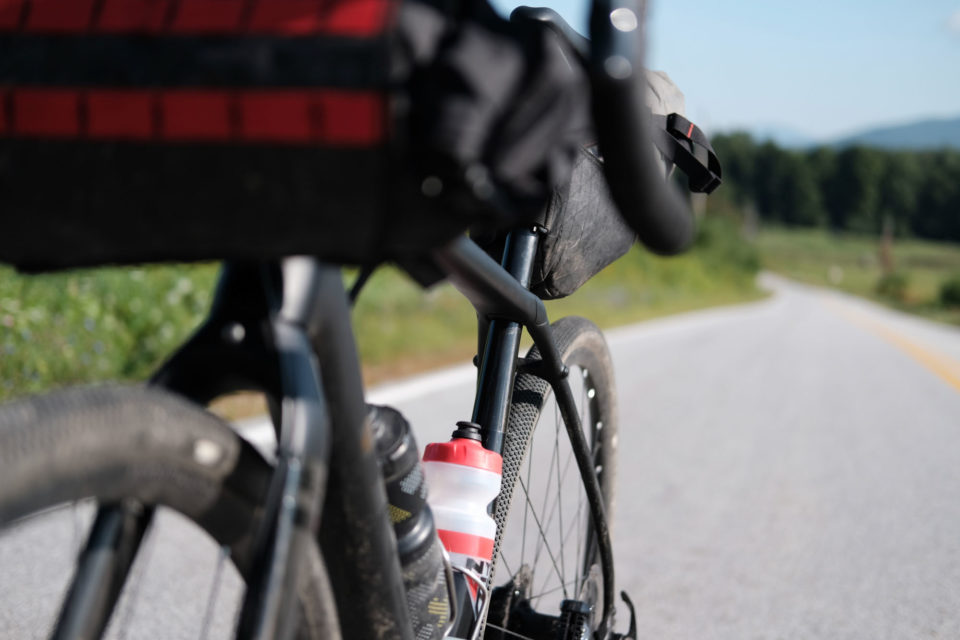
The Schwalbe G-One 35mm tires are excellent for the mix of road riding and hardpack dirt that this bike thrives in. They are a limiter, though, with respect to more broken dirt outings. The most forgiving gear is the one-to-one of the 34t small chainring and the 34t big cog. I can imagine someone wanting something more climby than that, so keep that in mind. The BB90 bottom bracket is press fit and that probably makes many of you angry, but it is perfectly standard for a carbon bike.
One last concern: I’m 5’8”/173cm and the 54cm bike fit me splendidly. But with my 31”/78.7cm inseam and slight toe-down-ish pedaling style, the cap on the seatpost that adjusts saddle height was exactly on the safety upper limit line. Perhaps my inseam is unusually long for my height, but if I was designing a bike, I would make it so that the saddle height could accommodate the tail ends of the distribution, then I’d add a centimeter or two.

- FRAME Trek Checkpoint SL carbon fiber with IsoSpeed decoupler, 12mm thru axle
- FORK Trek Carbon disc, 12mm thru axle
- HEADSET Trek integrated
- WHEELS Bontrager Paradigm Comp Tubeless Ready Disc
- TIRES Schwalbe G-One Allround, 700x35mm
- HANDLEBAR Bontrager RL IsoZone VR-CF
- STEM Bontrager Elite, 7 degree
- SEATPOST Bontrager Ride Tuned carbon seatmast cap, 20mm offset
- SADDLE Bontrager Montrose Comp
- SHIFTERS Shimano Ultegra 11-speed
- BRAKES Shimano Ultegra flat mount hydraulic disc
- ROTORS 160mm
- REAR DERAILLEUR Shimano Ultegra 11-speed
- CHAIN Shimano HG600 11-speed
- CASSETTE Shimano HG800, 11-34 11-speed
- CRANKSET Shimano Ultegra Compact, 50/34
- BOTTOM BRACKET BB90
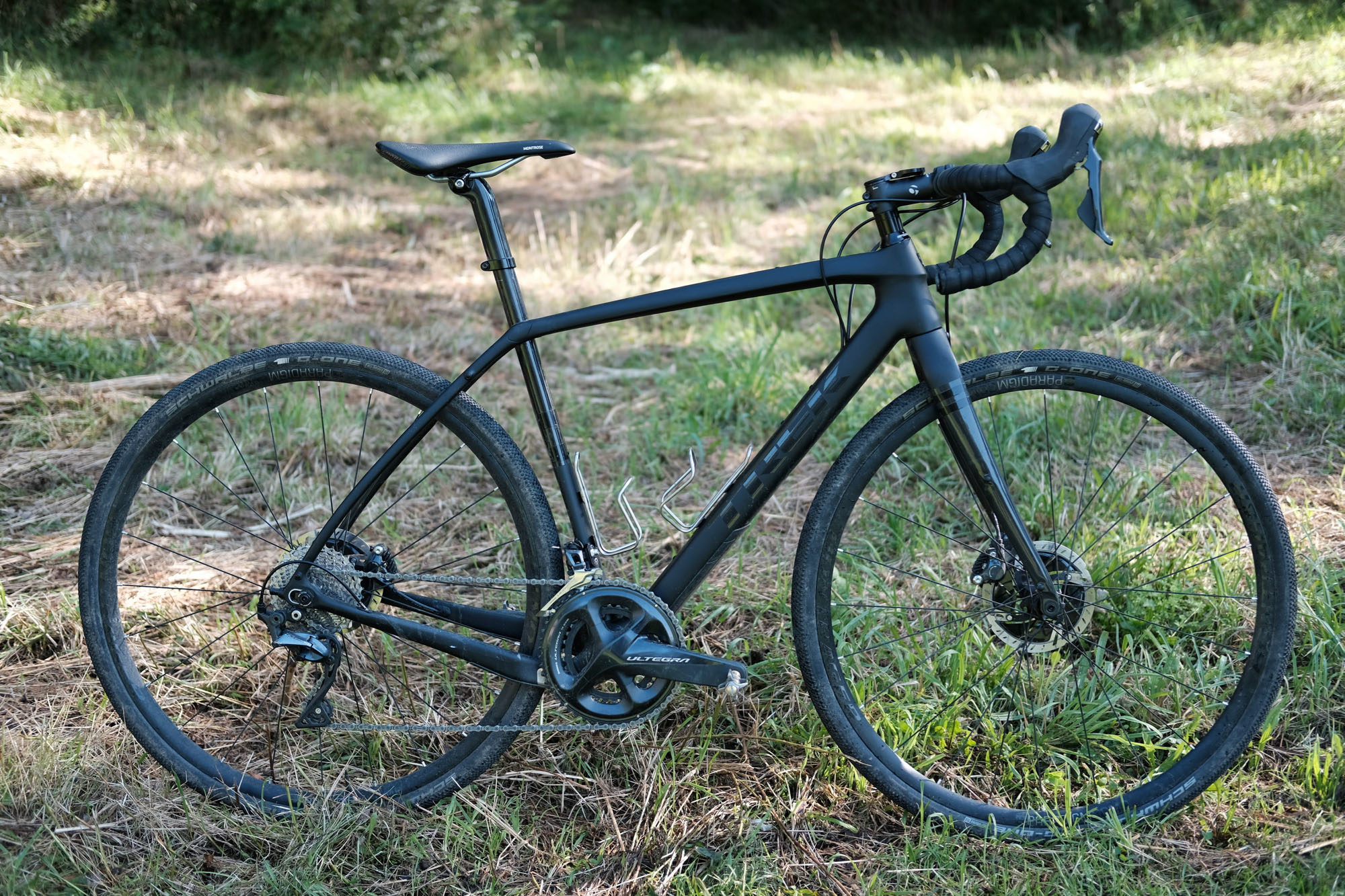
- Feels like a road race bike
- IsoSpeed coupler absolutely smooths out jolts
- Thoughtful design touches, including a variety of bosses for cages, armor under the downtube, bosses for a gas tank bag
- Very capable on tarmac alongside its gravel prowess
- 650b conversion not recommended
- Unusual routing can cause cable contact with knees depending on out of the saddle pedaling style; might also interfere with feed bags
- Long inseam riders may reach the end of the saddle height adjustment
- Purpose built for speed rather than maximal bikepacking versatility
- Model/Size Tested Trek Checkpoint SL6, 54cm
- Weight (as tested) 19.7 lbs. / 8.9 kg for 56cm
- Rider Height/Weight 5’8″/153 lb (173cm/69.4kg)
- Price $3,999
- Place of Manufacture Taiwan
- Manufacturer’s Details TrekBikes.com
What the Checkpoint is not is a Swiss army knife of all-road touring. Nor would I recommend this to someone whose image of bike camping was primarily leisurely strolls with friends to end at a nearby spot. That’s a great way to bikepack, but you don’t need and probably wouldn’t want this bike for that. Two “ifs” therefore drive my thinking about the Trek Checkpoint SL6. If I was in the market for a decidedly road bike platform that I could race and ride fast on dirt, and if the feel and advantages of carbon fiber frames was appealing, then this bike would surge high on my list. It’s refined, it’s a blast to ride while breathing hard in the drops, and the IsoSpeed coupler is effective.

Rider Profile
Joe is a philosophy professor and expedition cyclist. He took his first bikepacking trip in the late 80s and has since traveled the world on everything from a folding bike to a full suspension mountain bike to his now preferred titanium fat bike. Along the way he raced cross country mountain bikes—often singlespeed—on three continents. Recent trips include Croatia and Tasmania.
- Height: 5’8” (173cm)
- Weight: 149 lbs. (67.6kg)
- Inseam: 31” (79cm)
- Current Location: NYC / Southern Vermont
- Favorite Beer: Hill Farmstead Self-Reliance #2
- Favorite Route: Anywhere in Peru
Trek provided us with a 54cm SL6 for this test.
FILED IN (CATEGORIES & TAGS)
Drop-bar & gravel bike reviews.
Please keep the conversation civil, constructive, and inclusive, or your comment will be removed.
Rad Companies that Support Bikepacking

You need to be logged in to use these features. Click here to login , or start an account if you’re not yet a member of the Bikepacking Collective…

2019 Trek Checkpoint SL6 Review – American Muscle
- Bike Reviews
- October 8, 2018
- No Comments
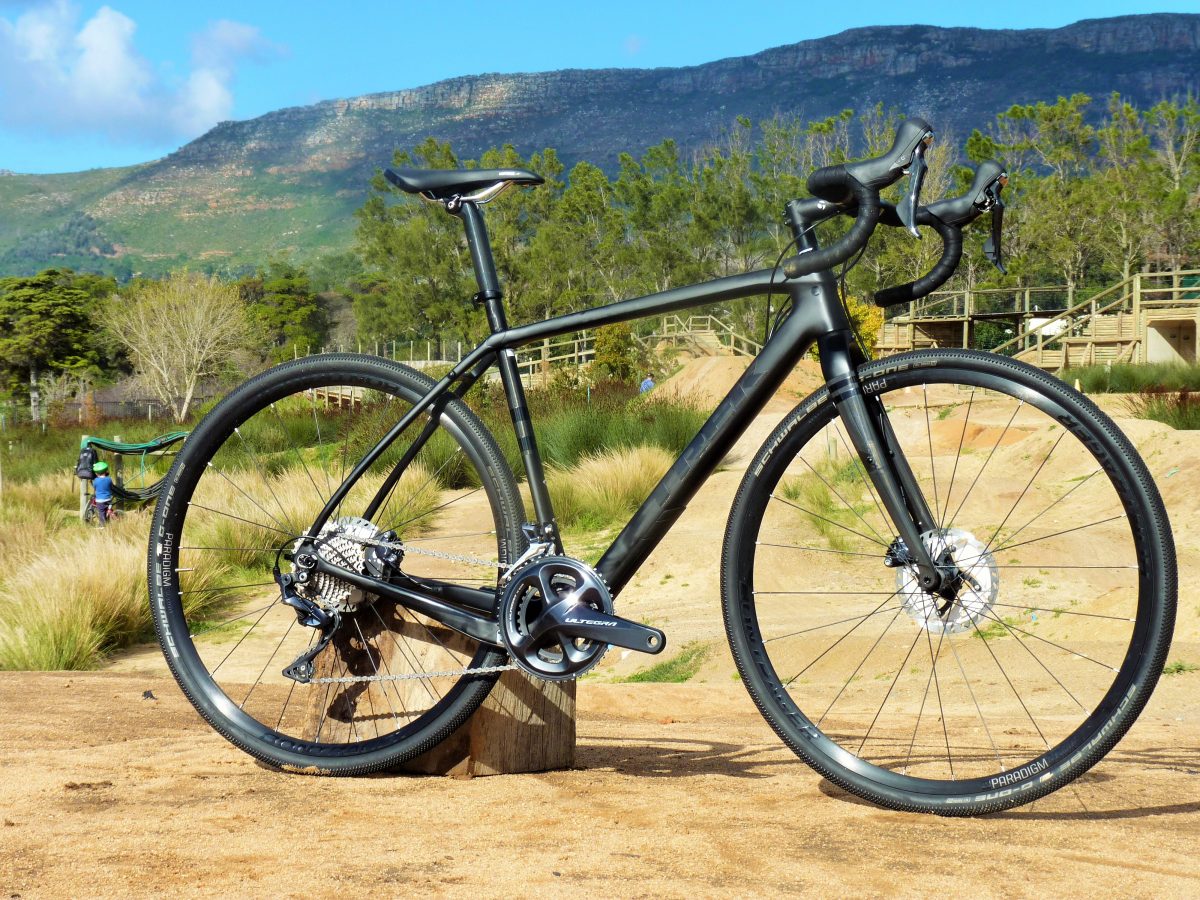
The 2019 Trek Checkpoint SL6 is a gravel-bike that has earned the American-muscle badge here at our test HQ. Trek’s confident approach to fabricating bike technology, has yielded a gravel bike unframed in its ride style. It might be the many-few cyclists that passed by, bawling “gravel-bike, gravel bike!” that suggested this bike has already become an icon.
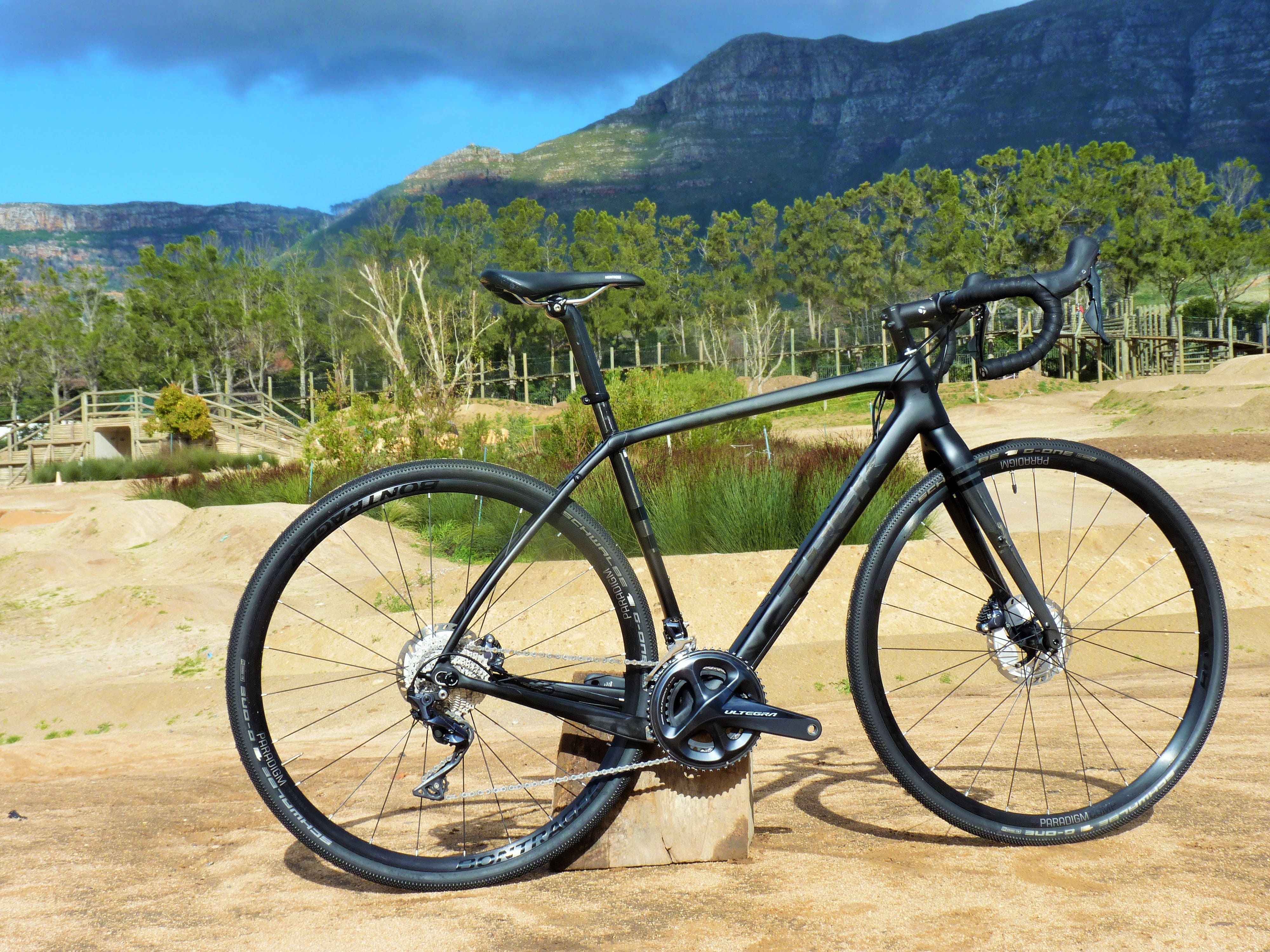
Trek dialled in major tech benefits on the Checkpoint’s frame. The 500 OCLV Carbon Fibre that embodies the frame, keeps the weight of the bike low. While Trek’s IsoSpeed technology creates compliance within the triangle of the frame. Adding on to the forgiving nature of the frame, is Trek’s Ride Tuned seat mast, which slides over the seat tube, instead of sliding into it. Unlike most conventional bikes.
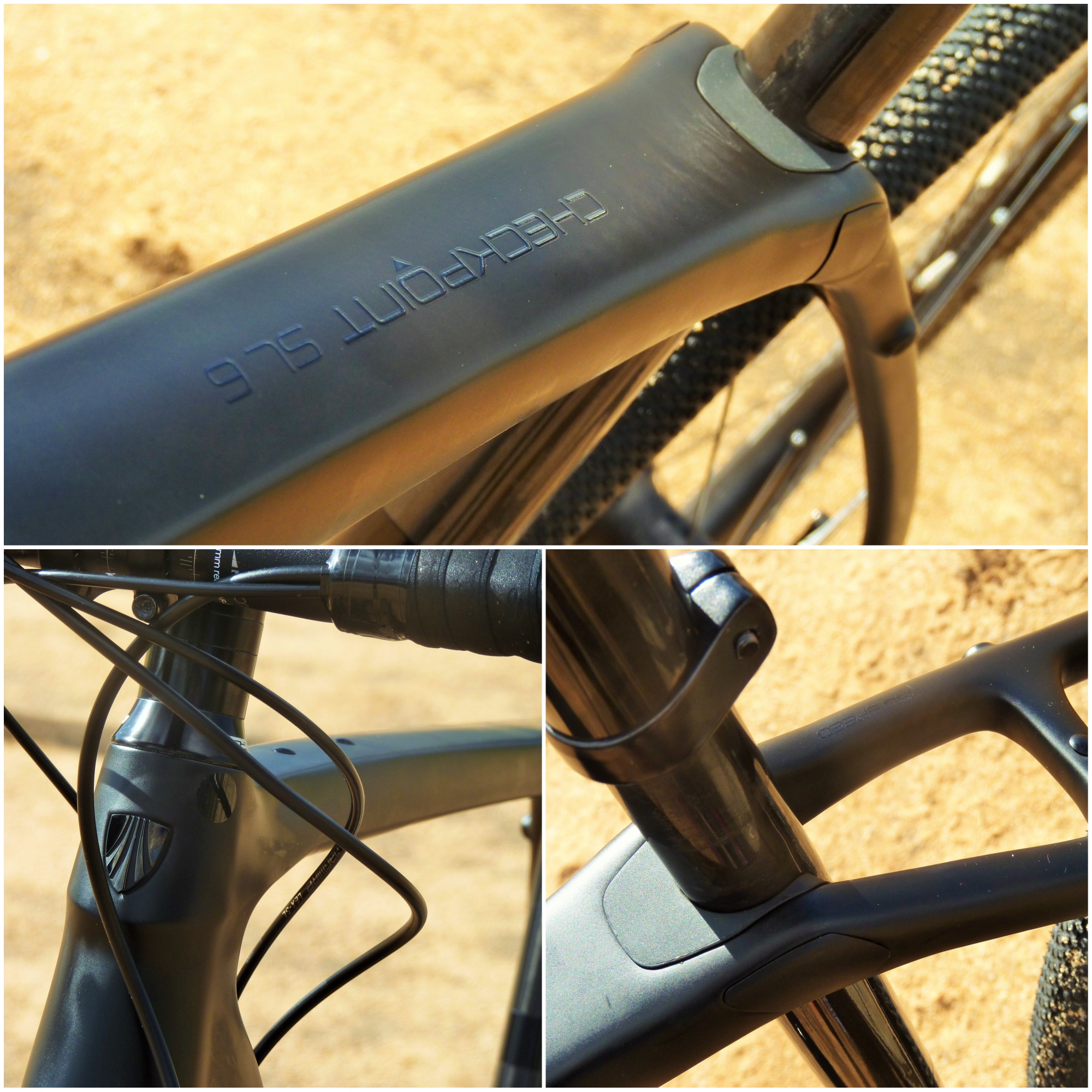
The Wheels:
Bontrager’s Paradigm Comp TLR wheel-set is so lightweight and stiff, we had to double check to make sure it wasn’t carbon! This Alloy wheel-set has certainly raised the weight-factor bar quite high, and by making use of an off-set spoke bed, the rims themselves are extra stiff. In terms of weight figures, you’re looking at about 755-grams for the front wheel, and 920-grams for the rear wheel.
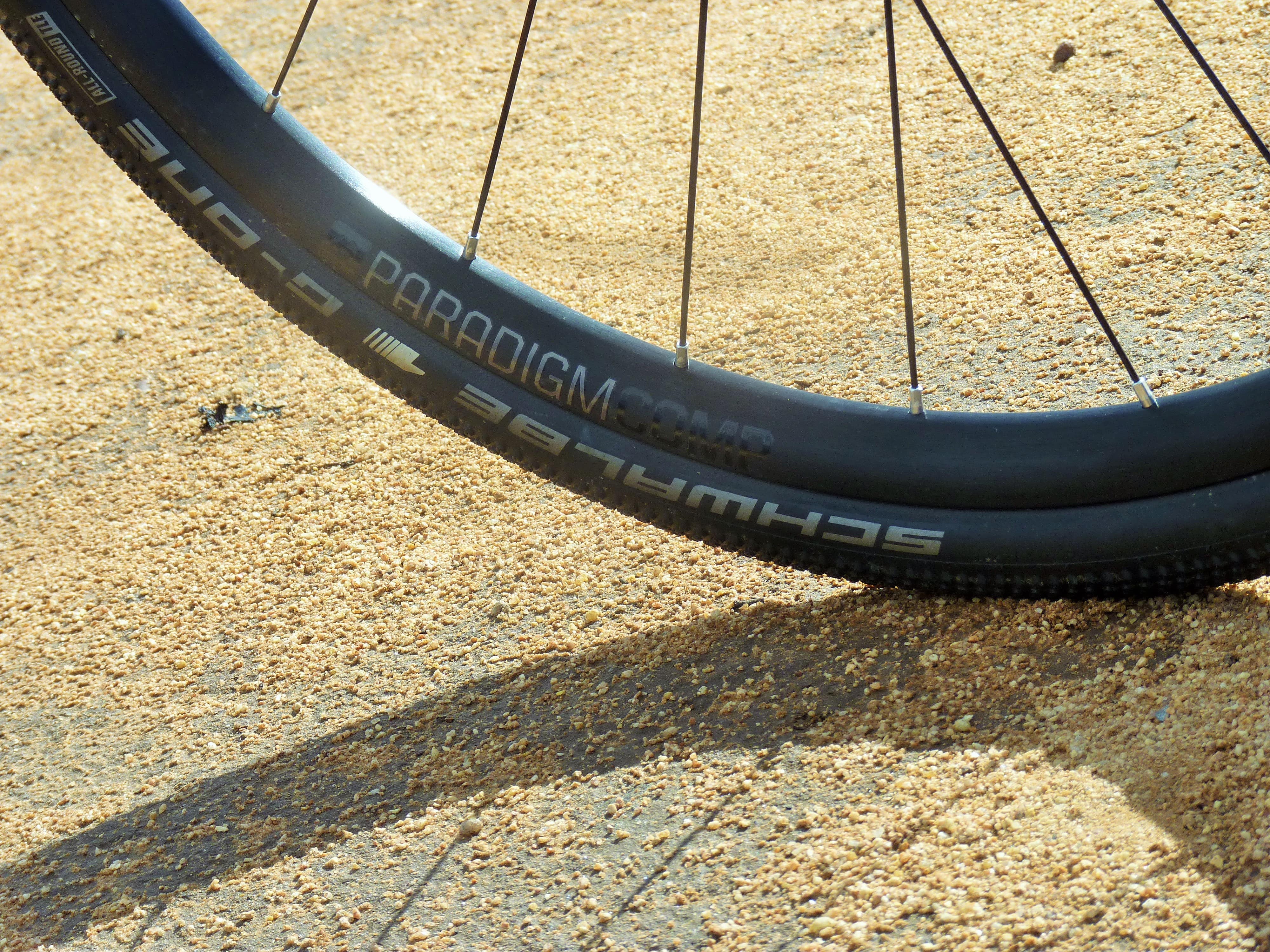
The entire wheel-set is tubeless ready, and comes rubberized with Schwalbe G-One All-round tyres. From a buyer’s point of view, the 700c X 35 tyres are ideal for road and trail grinding. They also seem to hold their grip well over time, and not be worn out by constant, fun, wheel skids.

The Drivetrain:
The Shimano Ultegra gear-set matches the lightweight theme of this gravel bike. With the rear derailleur featuring Shimano’s Shadow technology, for a more compact look. The crank arms are constructed from feathery material, without feeling flimsy when laying the hammer down. Then serving the Checkpoint’s purpose well, is the 2X11 gear ratio. The crank chain-rings set is a 50T/34T pair-up, and the cassette ranges from an 11T till a 34T.
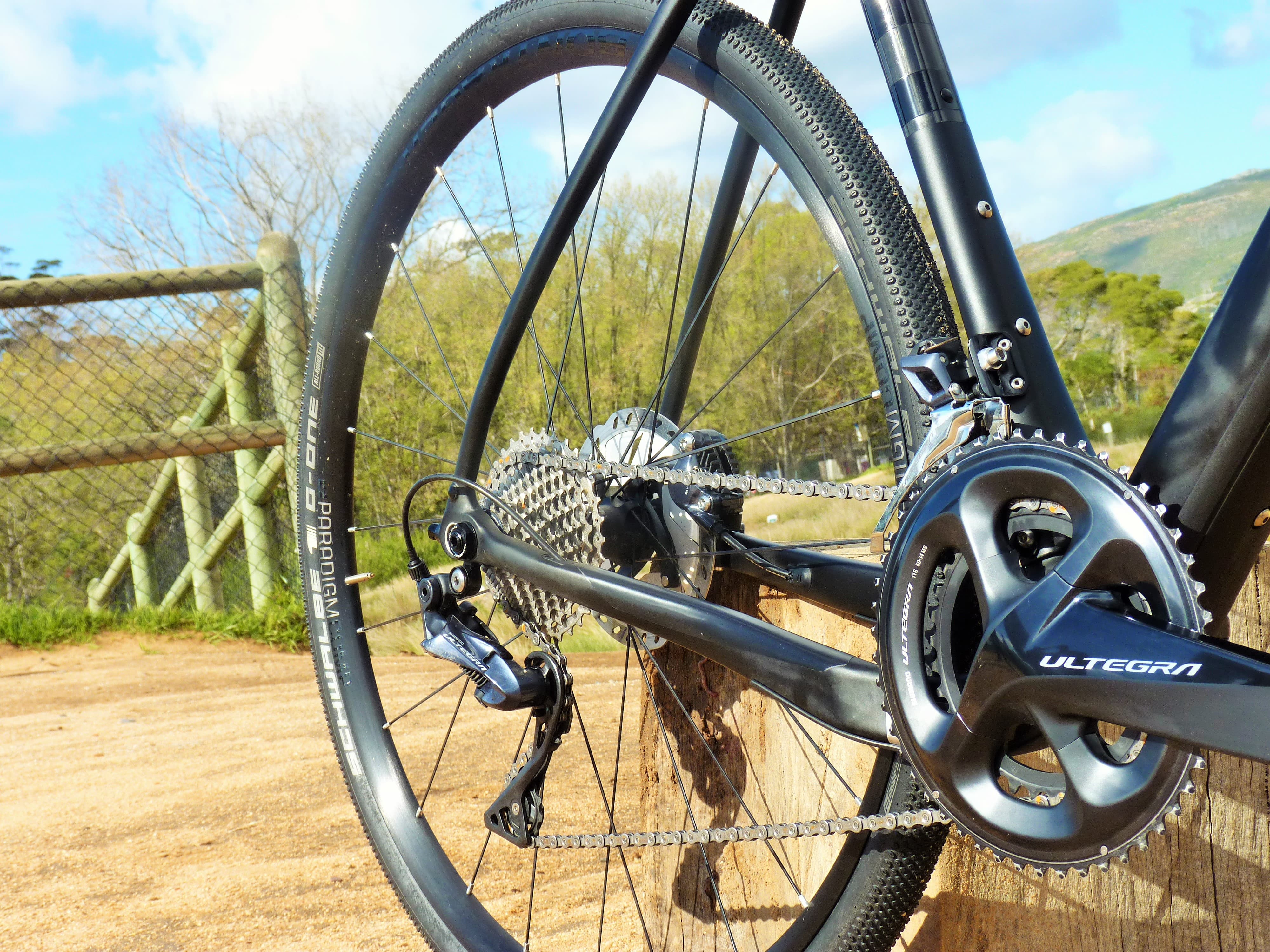
Total Bike Weight: 8.94kg (without pedals)
In its class:
[wptg_comparison_table id=”2″], geometry: .
Trek’s 2019 Checkpoint SL6 exhibited momentous, stiffness on ascents. Whether on gravel surfaces or neatly paved tar, we could feel Trek’s unique carbon layup on the bottom-bracket, provide a sturdy frame base. The wheel base, rather counteracted flimsiness of the bike. When we stood up, out of the saddle, the Checkpoint was the most reliable to let every pedal stroke be put to use.
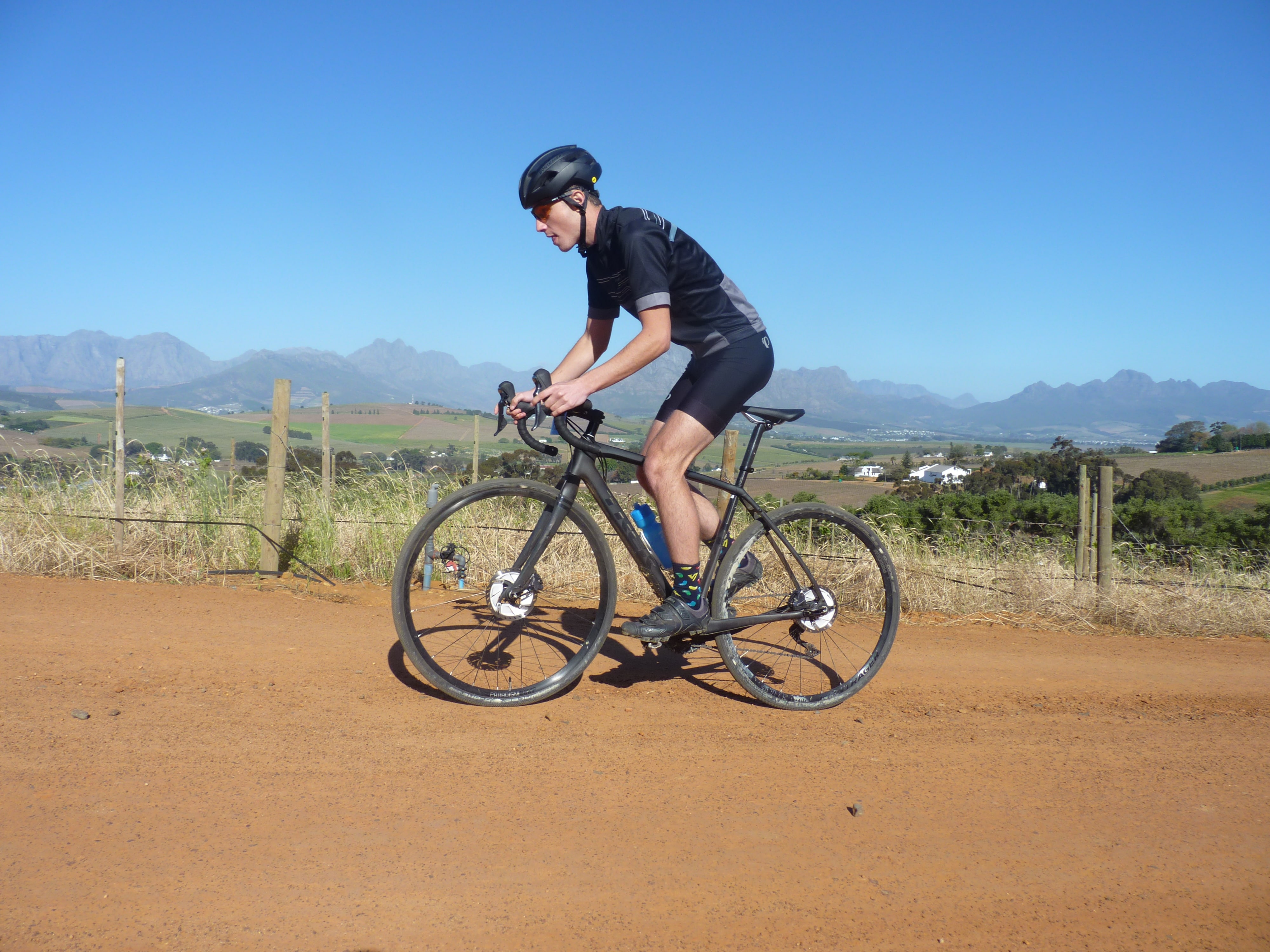
The 2×11 drivetrain, that propelled the Checkpoint forward along flat sections, gave us bridge between precision shifting and excellent cadence. It was very easy to knock the chain up to the outer chain-ring, and crank out some good kilometres. However, the gear-set wasn’t the only thing that made cruising this, muscle bike, a pleasure. Since the Bontrager carbon seat-mast was Ride Tuned, the bike felt natural and part of you, even when having spent a good deal of time on it. The handlebars also didn’t strain our hands, but instead were wide enough to hit the dropper bars and cruise.
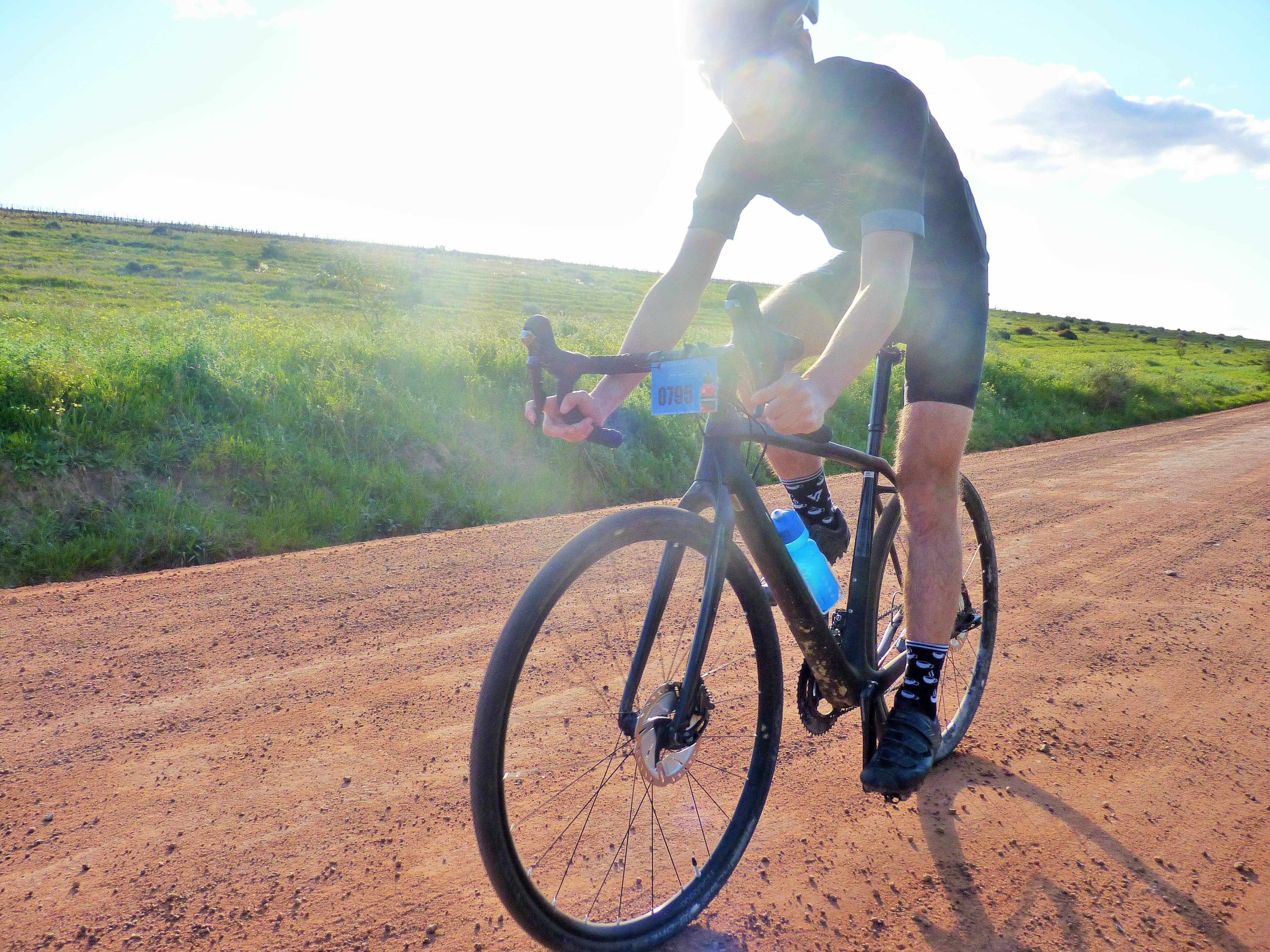
We verified the Trek Checkpoint’s versatility, by riding it on both MTB pledged single-track, and the unforgiving tarmac. Obviously, on the MTB track you can’t ride too fast, for fear of simply being rocked and shaken of the bike. That’s one thing we might add to the bike, a front shock, but then again that depends on the type of riding you’re going to be doing. And Trek have already compensated for this with their IsoSpeed decoupler, which adds compliance to the bike over bumpy stuff.
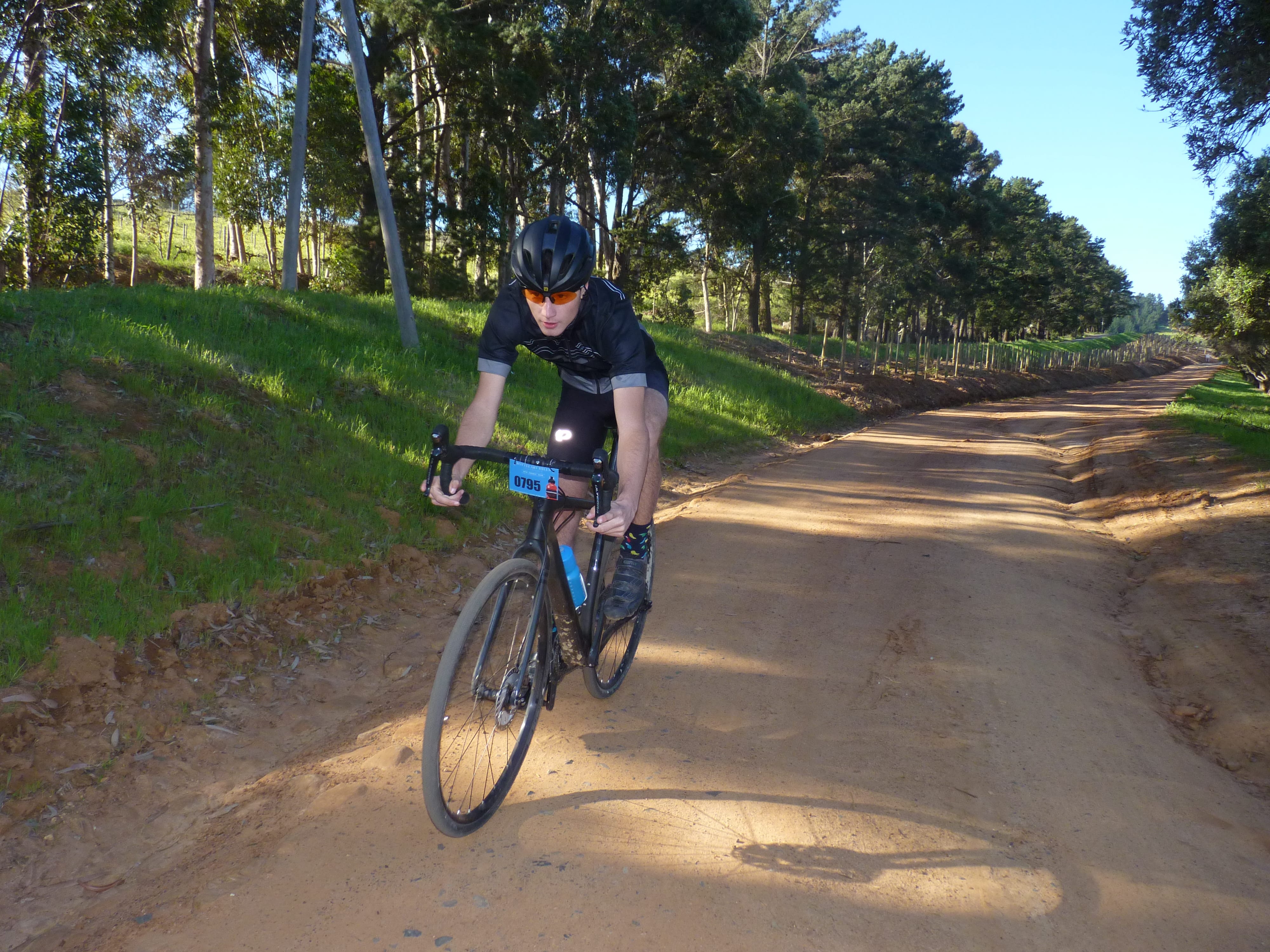
On the tarmac, the Checkpoint was confident and fast. If we did hit a pothole or two, the bike wasn’t thrown off its line. Probably because of the width of the tyres, and more stable build. But still I’d like to see a road bike handle like that someday. Then, if we needed to slow down, the hydraulic disc brakes were always at our disposal. In fact, we believe every gravel-bike should have this type of disc brake. It just eliminates so much strain off your hands.
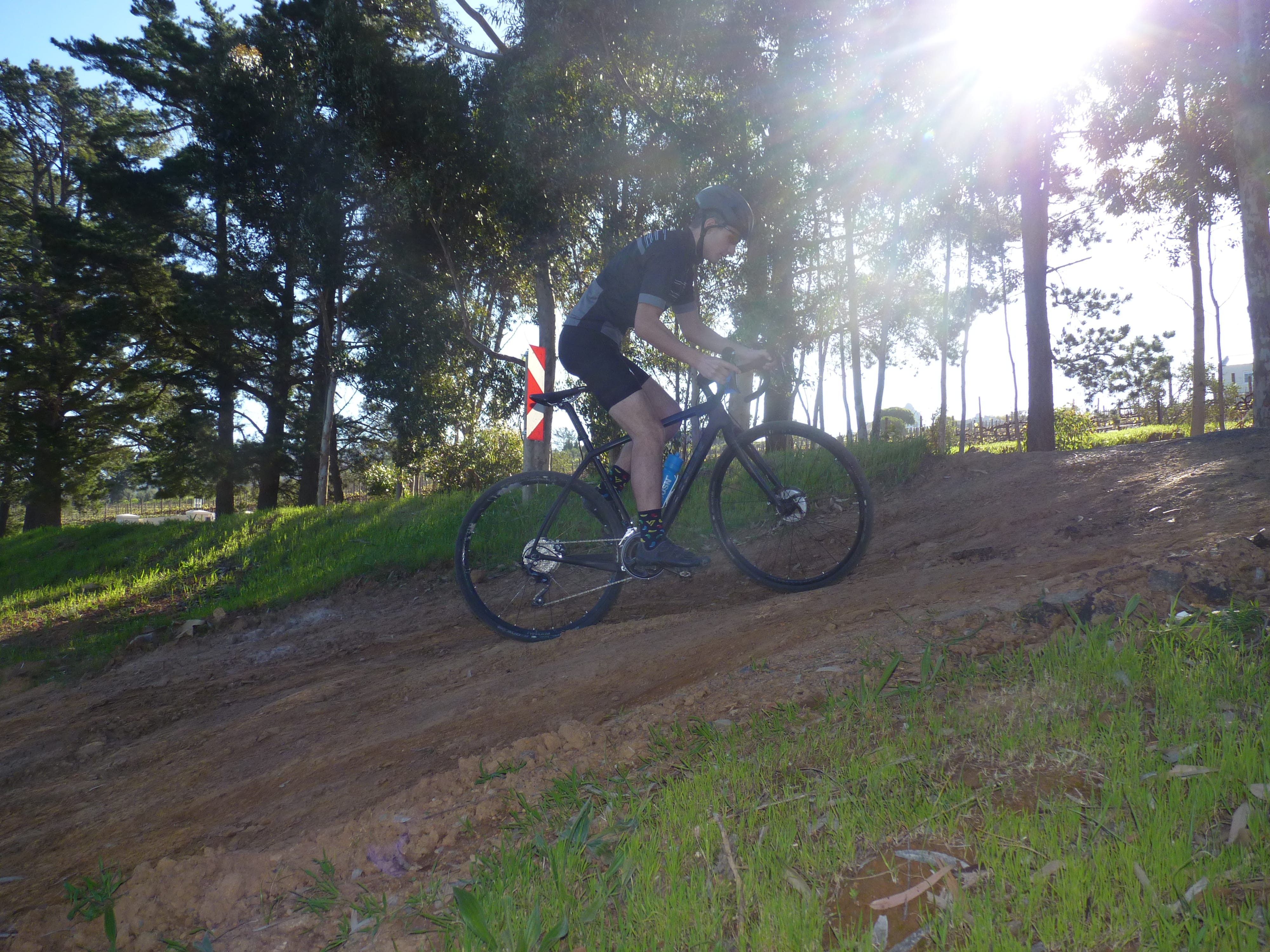
Trek aren’t afraid to push the limits of engineering bikes that are fun to ride. They’ve shown this characteristic immensely on the Checkpoint gravel bike series. For the Checkpoint SL6, we’re positively impressed! It projected great technology, and superb ride quality. It’s truly the most muscular, gravel bike of its kind.
Price: R 69,999.00
Leave a Reply Cancel reply
You must be logged in to post a comment.
Browse hundreds of ratings and reviews from real riders all over the world.
Recent posts.
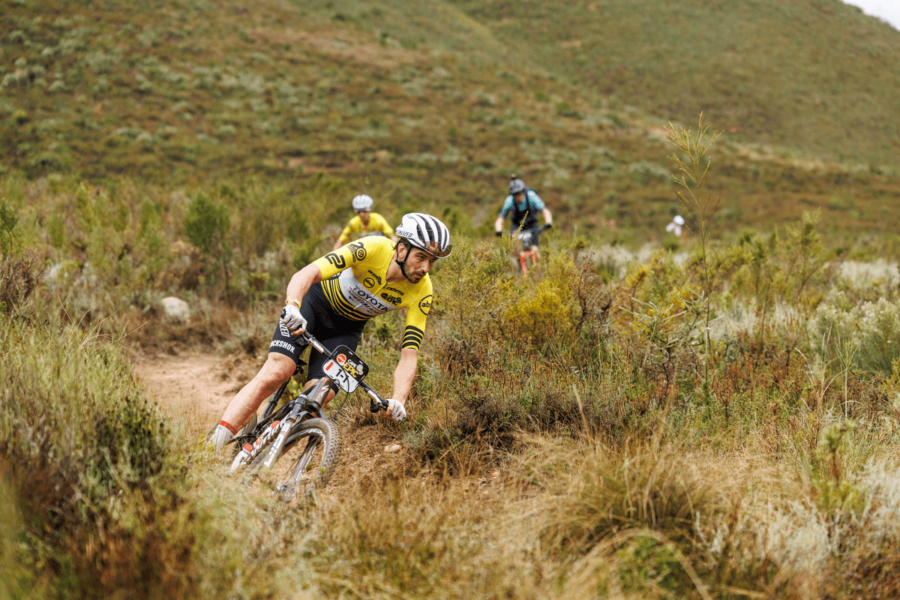
2024 Absa Cape Epic: Toyota-Specialized-NinetyOne grab the gold while GHOST Factory Racing dominate

2025 Absa Cape Epic Early bird entries SOLD OUT
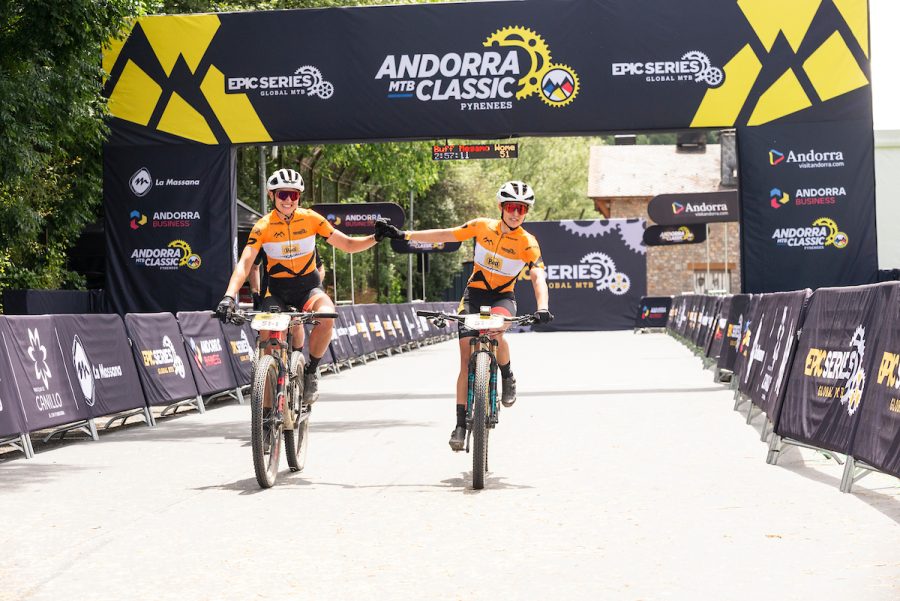
2022 Andorra MTB Classic: BUFF MEGAMO Double Up on Stage 1
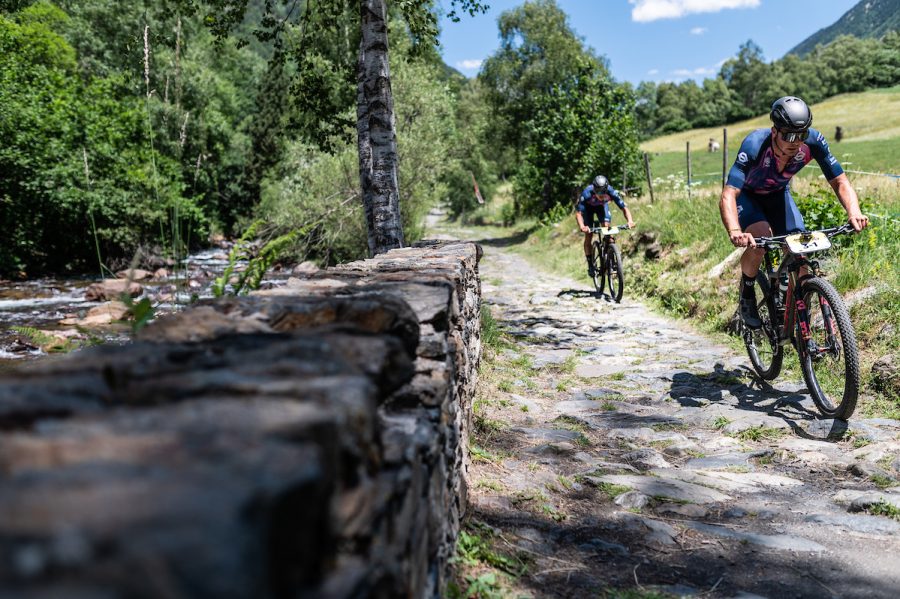
2022 Andorra MTB Classic: Prologue Race Report
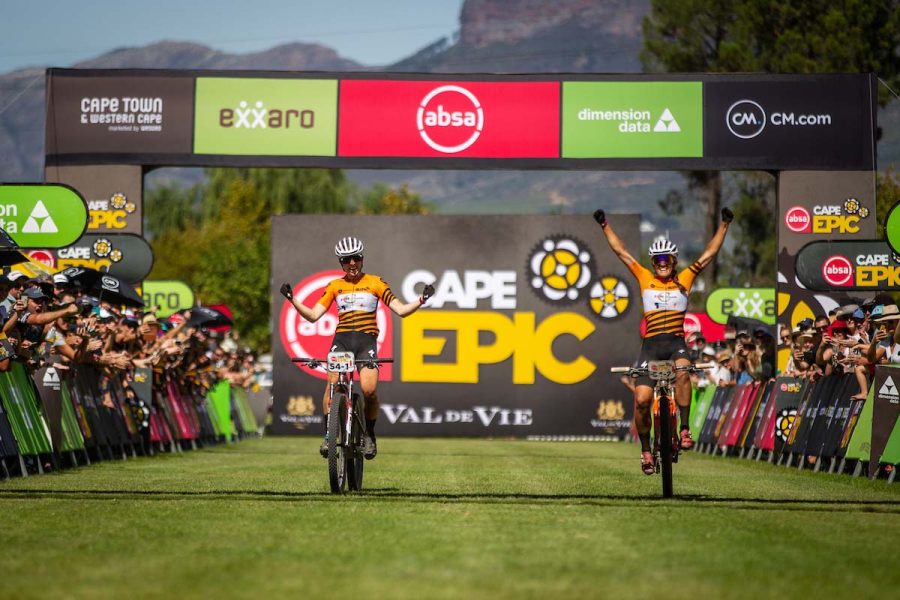
NinetyOne-Songo-Specialized 2022 Absa Cape Epic Women Champions

Specialized Stumpjumper Alloy
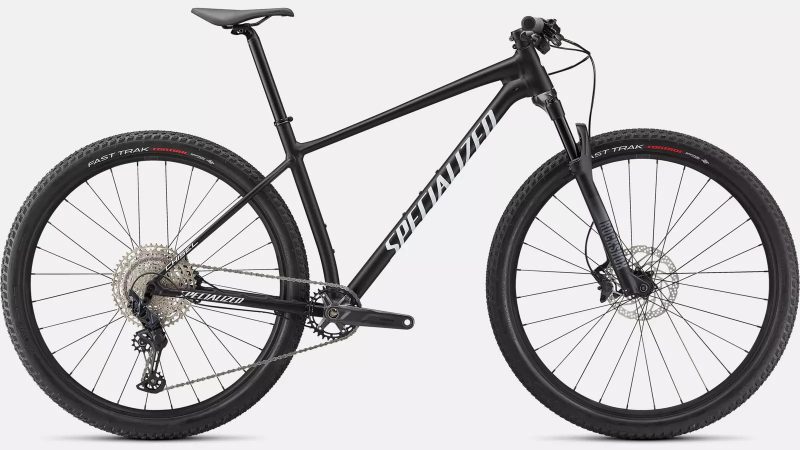
Specialized Chisel Comp
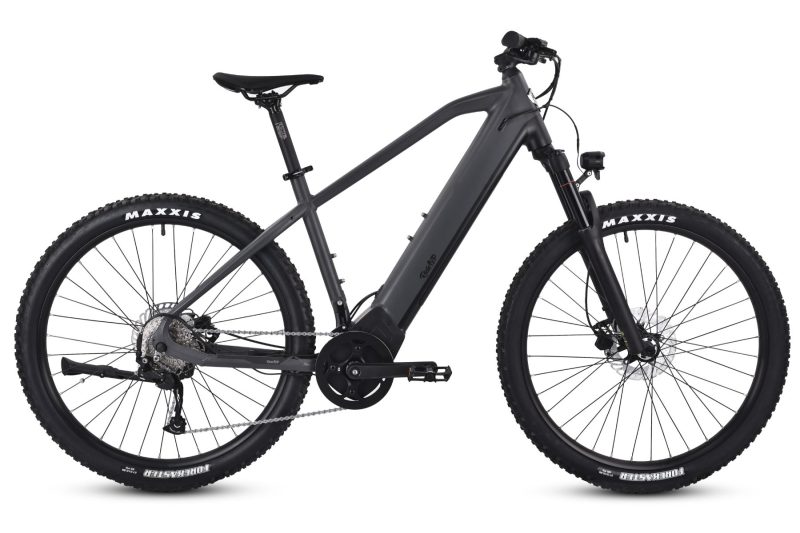
Ride1Up PRODIGY XC
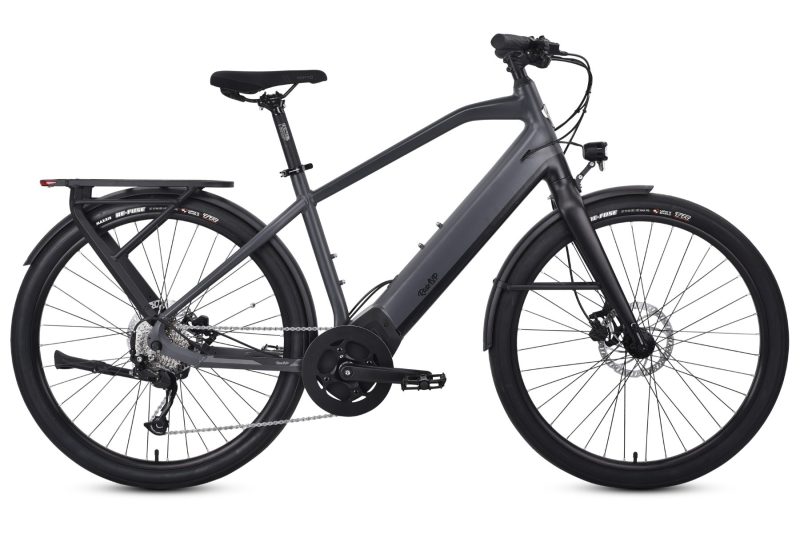
Ride1Up PRODIGY XR
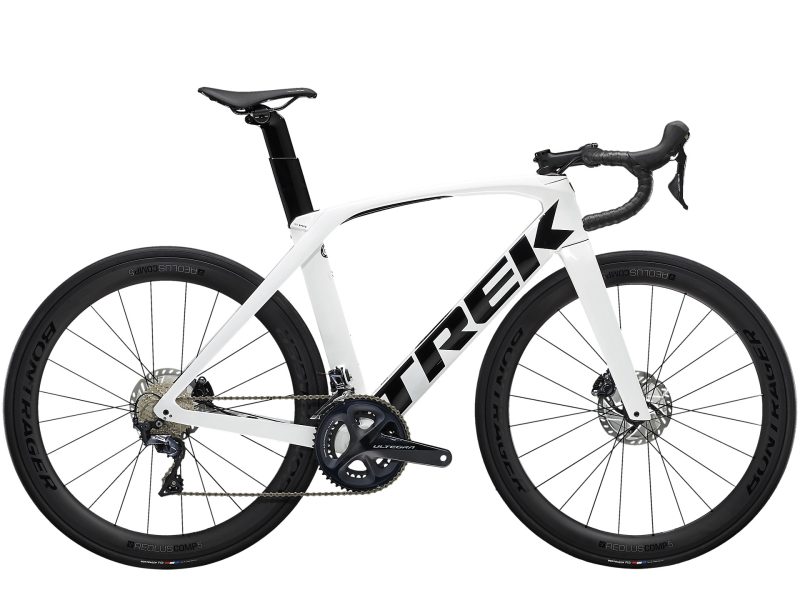
Trek Madone SL 6
Join the community.
Create an account | Rate & review bikes
Only fill in if you are not human
Remember Me
Forgot password?
- Competitions
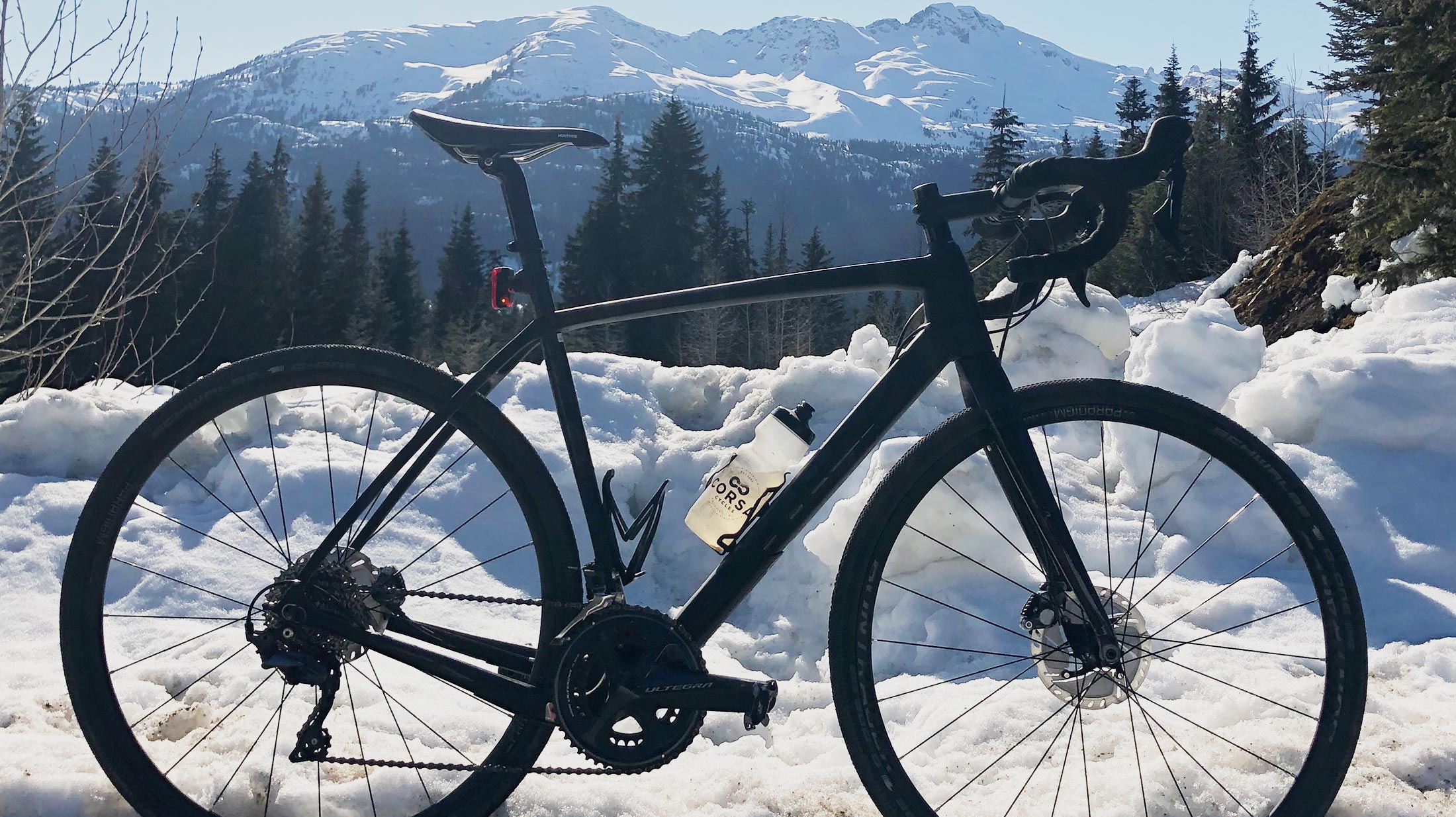
2019 TREK Checkpoint SL6 Review
Full disclosure, this is my first gravel bike. When gravel bikes entered the scene a few years, I initially remarked to myself this was another bike industry push to create something new and drive sales.
Essentially ‘gravel’ was marketing. Why not just give ‘er on your road bike with some 28c tires? Or really, just hop on the cyclocross bike and go? And all three of these thoughts are true. It is marketing hype. You can actually take a road bike and ride it on a gravel road. And a cyclocross bike works just fine, even if it’s not being ridden at full gas on a grassy slope. So where does this leave us and why did I buy a gravel bike? My prior bike stable variously included a road bike and a cyclocross bike which sometimes doubled as a winter road bike with fenders. I had treated myself a couple of years ago, and was riding a Specialized Tarmac SWORKS which is truly a thoroughbred. Very fun to ride, but I was not racing. And I live in Whistler British Columbia, where there is limited options for road riding. I race a bit of cyclocross and previously had Trek Crockett for the few races I did each fall. I had a few goals with this purchase: Reduce the bike quiver to 1 skinny tire bike. Ride it for everything. This was partially a budget decision, Feel more comfortable riding the gravel-strewn and pothole-ridden roads of Whistler, Maybe throw a leg over the bike for a CX race or 2, and Explore some gravel roads. More specifically plan a big multi-day adventure with as much non-asphalt as possible.
In 2019, I was riding with a club supported by Trek. After doing my independent research, I was also suitably impressed by the Checkpoint, Trek’s gravel bike. So I pulled the trigger on a Checkpoint SL6 I purchased the bike right at the end of season, just as 2020 bikes with being announced and shipped. The SL6 model is almost identical year over year, save for graphics.Trek has introduced a SL7 model, with a SRAM Eagle drivetrain, but this was not for my liking. I specifically wanted a 2x drivetrain for versatility on paved roads (where the bike would actually spend most of its time). The Checkpoint SL6 is a well appointed bike with a Cdn MSRP of $4999. Carbon frame and Ultegra groupo - this was really my starting point and floor of what I wanted. I was coming off a full DuraAce bike and was hesitant to give up any more. The SL6 comes with compact cranks and 11-34 cassette. I know the gearing makes sense, specifically to have a compact crankset - but I generally dislike compact. I specifically choose standard 39/53. Maybe I consider myself a ‘hard man’ but I should heed the signs of change. Trek no longer ships ANY road bike with standard cranks. Even their highest end road racing machine, Emonda, is compact. The build is as much house brand Bontrager as possible. My experience with Bontrager components has generally been fine. Nothing stand out, but good working stuff. And it allows Trek to appropriately appoint a bike and potentially keep costs down with their own OE parts.
Ultegra crankset. Many manufacturers look to cranksets as an opportunity to downgrade and save costs on overall build. Many OE or alternative cranksets are probably just fine, but I was reassured of having Ultegra crankset to match with the rest of my groupo. As well, if you are thinking of an aftermarket crankarm-based power meter, a la Stages or other, this is definitely important.
IsoZone drop bars. Well I got sold on the marketing here. IsoZone bars are simply an application of gel pad under the tape to absorb some vibration. Nothing fancy here. I was double taping my bars for extra cushioning in 1992. I was actually expecting a foam core bar, perhaps something like Spank Vibrocore. And I was slightly disappointed my 56cm bike was standard with 42cm wide bars in lieu of 44cm.
Bontrager Paradigm Elite 25 TLR Disc Road Wheel. While these were not actually sought after, I was reassured the wheel set was again not a place where build price had yielded a decision to have very cheap wheels. At 1682g for the wheel set, these are by no means light. But I hoped they would be light enough, and strong enough for some off road adventures. I actually planned for a second set of wheels. More on that later.
I have now had the opportunity to ride the Checkpoint a number of times and in a variety of conditions. This includes solo and group road rides, coaching high performance workouts including hill repeats and sprints, casual gravel rides and a cyclocross race. I have not yet taken the bike on a multi-day adventure. On the road, the bike feels settled and comfortable. I am about 5’11” with a 32” inseam and typically a 56cm bike fits me spot on. This was the case with Checkpoint, save for one fitment item. The Checkpoint uses an over-mast seatpost which is available in short and long. The 56cm frame comes standard with short, and my post is a couple of mm above the maximum height height line. I’m not a big fan of this system, but recognize it’s necessary for the the IsoSpeed system. Speaking of that, I don’t really notice the IsoSpeed decoupler. On the road, it’s imperceivable. On gravel, pretty much same. I put that in the positive attribute category. I know it’s working but I’m not fussed with it, nor does it change how I ride the bike. Great! Notably, the Checkpoint does not come with a front IsoSpeed system. Various comments from Trek claim it’s not required to achieve the ride quality desired. That’s BS. The Boone and now the Domane both have IsoSpeed on the front of frame. The Checkpoint will too in its next iteration. Otherwise the decision not to include this feature is based solely on frame manufacturing cost and bike price point. I have not ridden a Trek with IsoSpeed front but would be interested. The Checkpoint’s main competition, the Specialized Diverge has a proprietary Future Shock system. What’s the best way to gauge the characteristics of a bike? Well doing some sprints and big hill climbs is a start. Out of the saddle putting down maximum power into the Checkpoint, it feels like a nice carbon road bike. The geometry for standing with hands on hoods is comfortable. The bike was slightly less responsive than I’m used to, but for all but crit racing, the performance deficit would be negligible. At 20 lbs, this bike is not featherweight. If you are a weight weenie, this may be an issue. The weight actually surprised me, given it’s a full carbon frame with Ultegra groupo, but then I compared to a similar Domane and found the weight almost identical. I did also take off the water bottle cage one day and try my hand at a local cyclocross race. For this, I mounted some UCI-legal 32cc tires and went for it. Again, not once during the lung-seering leg-aching 45 minutes of my race did I actually think about the bike. I didn’t remark to myself about handling characteristics or not being a 1x gear setup. I just rode the bike. And it worked fine.
A lot of time is spent on the internet by folks obsessing about frame geometry and implied ride characteristics. So now I have too. Comparing the Checkpoint, Boone and Domaine, they are all very similar. I would expect a gravel bike, compared to a cyclocross bike, would be generally slacker with a lower BB height. I was surprised that the head tube angle on the Checkpoint is just slightly steeper and the trail is significantly less. In the past, Trek has marketed different bike fitment styles for road bikes, namely H1, H2 and H3. These go from ‘racer fit’ to a more relaxed upright fitment posture. For Checkpoint, Trek makes no mention of this branding. Compared to the Domane, the frame stack is ~2cm higher but they share a 100mm stem length. Before buying this bike, and embarking on the one bike for all purposes idea, I planned to purchase a second wheel set. This would allow me to have a lighter wheel set for road use, with 28c road tires and potentially steeper gearing. I ended up purchasing a set of Easton EA90SL wheels with Schwalbe Pro One TLE's. Another disclosure, I am an ambassador for Easton and Schwalbe. The EA90SL wheel set is a comprise. Not the fancy carbon wheels I was hoping for, but best bang for your buck and same weight as their carbon cousin, EC90 SL, at <1500g. I installed a 11-28 cassette which seems plenty of gear range still for road only, especially with a compact crankset. The ability to swap wheel set and choose between road and off-road adventures in 60 seconds is a game changer. I highly encourage riders thinking along the same lines as me, one bike for all, to consider two wheel sets.
Nit picking
I have already mentioned the short seat mast. But what are the other details I have found that need attention?
Tires . The Checkpoint comes stock with 35mm tires but specifically calls out that 40c’s fit. In the age of gravel, why not 40c’s stock? The Domane, a road bike, now comes with 32c and fitment for 38c’s! This seems a miss for real gravel riding as compared to other similar bikes.
The ‘missing’ front IsoSpeed decoupler I have also mentioned. Dimes to dollars, this is coming. My 2019 model is full Ultegra, while the 2020 model of the SL6 now is equipped with an Ultegra RX rear derailleur. It would be nice to have a clutch derailleur but I have not specifically noticed a lot of chain slap while riding on gravel or off-road.
All of the rubber grommets in the mounting locations on the bike. There must be 1000 on the bike, for fenders, panniers, racks, packs, bottles and whatever. I’ve not used many yet. But I’ve already lost a grommet from my fork and now have a hole in my bike.
The last is internal storage . This is now a frame feature for the Domane, and like the front IsoSpeed I am confident it will be included in the next iteration of the Checkpoint. It’s a great feature that I’ve used on my Specialized Enduro (and been told it’s coming on the new Diverge too). Tube, pump or CO2, small tool, and maybe even some emergency food or a windbreaker. The experiment is ongoing. So far, I have not missed my dedicated road bike. I’ve been having fun riding the Checkpoint everywhere. And it can even do duty as a CX bike in a pinch. As spring approaches here in Whistler, I have been out riding on the road (while the trails and gravel are all still covered in snow). With very dirty roads, lots of gravel and big pot holes, the Checkpoint has been a star. I’m riding with the 35c tires at about 70 psi and they are confidence inspiring on these crappy road surfaces. Back to the marketing. I dislike ‘gravel’ as a class of bikes, but am also hesitant to add something new. But if I were a marketer sitting in Madison WI, probably I’d call the Checkpoint the ‘all road’ bike
© 2024 Whistlermountainbike.com
- off.road.cc
- Dealclincher
- Fantasy Cycling
Support road.cc
Like this site? Help us to make it better.
- Sportive and endurance bikes
- Gravel and adventure bikes
- Urban and hybrid bikes
- Touring bikes
- Cyclocross bikes
- Electric bikes
- Folding bikes
- Fixed & singlespeed bikes
- Children's bikes
- Time trial bikes
- Accessories - misc
- Computer mounts
- Bike bags & cases
- Bottle cages
- Child seats
- Lights - front
- Lights - rear
- Lights - sets
- Pumps & CO2 inflators
- Puncture kits
- Reflectives
- Smart watches
- Stands and racks
- Arm & leg warmers
- Base layers
- Gloves - full finger
- Gloves - mitts
- Jerseys - casual
- Jerseys - long sleeve
- Jerseys - short sleeve
- Shorts & 3/4s
- Tights & longs
- Bar tape & grips
- Bottom brackets
- Brake & gear cables
- Brake & STI levers
- Brake pads & spares
- Cassettes & freewheels
- Chainsets & chainrings
- Derailleurs - front
- Derailleurs - rear
- Gear levers & shifters
- Handlebars & extensions
- Inner tubes
- Quick releases & skewers
- Energy & recovery bars
- Energy & recovery drinks
- Energy & recovery gels
- Heart rate monitors
- Hydration products
- Hydration systems
- Indoor trainers
- Power measurement
- Skincare & embrocation
- Training - misc
- Cleaning products
- Lubrication
- Tools - multitools
- Tools - Portable
- Tools - workshop
- Books, Maps & DVDs
- Camping and outdoor equipment
- Gifts & misc

The carbon frame ensures a high level of responsiveness, the geometry provides good high-speed stability and the steering is lively enough to be a fun ride through the twists and turns. In many ways, it feels like riding a Domane (Trek's endurance bike) with fat tyres.
The geometry goes a long way to defining a gravel bike. It needs to be stable for riding over rough terrain but also reasonably nimble and lithe for easy manoeuvrability. Trek started with its Boone cyclo-cross bike but increased the stack and lowered the bottom bracket. This cyclo-cross-inspired approach works well.
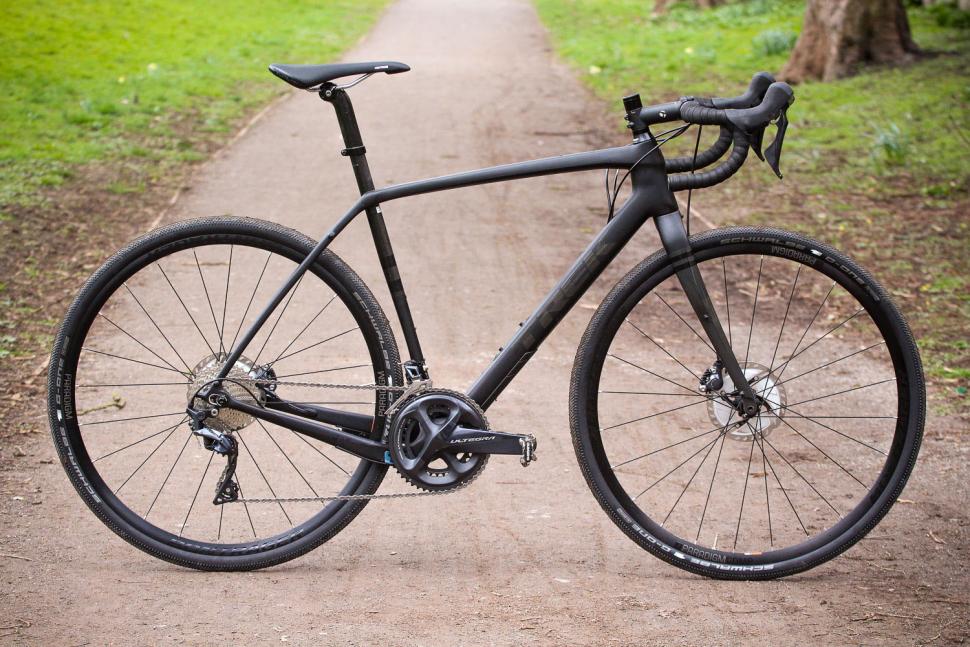
It cuts a fine balance on and off-road, and the transition from smooth to rough is good. There's a good amount of stability at higher speeds thanks to the long wheelbase, but it manages to be reasonably lively when changing direction, handy when bashing through narrow tree-lined singletrack. The wheelbase length can be adjusted to suit (Trek uses Stranglehold adjustable dropouts from one of its mountain bikes – more on that in a minute); I generally kept it in the shortest setting as I preferred the extra nimbleness it provided compared to the longer setting.
Get the Checkpoint onto the sort of trails it's designed for – gravel fire-roads, woodsy singletrack with lots of roots, overgrown bridleways and everything in between – and it's a mixed bag. On the one hand, seated comfort is very good thanks to the IsoSpeed decoupler (the seat tube is separated from the frame at the top tube junction to increase saddle deflection) and 35mm tyres. But the lack of a front IsoSpeed, as found on Trek's newest Domane, means the front is hard and unforgiving in comparison to the buttery smooth rear end. Trek explains this decision away as the wide tyres providing enough cush for most people, but I think it's a missed opportunity.
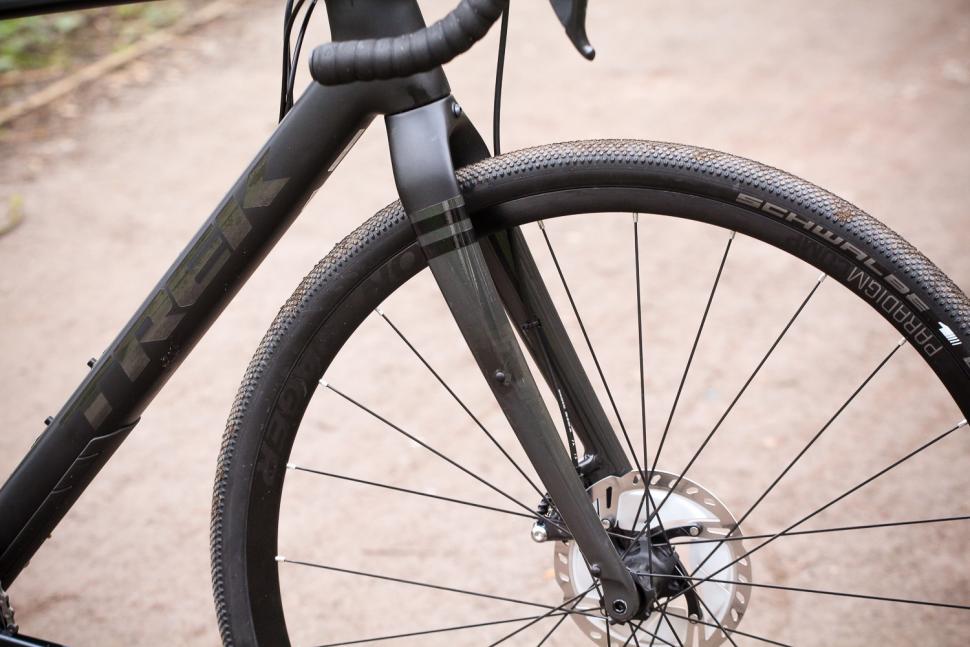
Naturally, wide tyres go a long way to cushioning the blows on rough ground but even at low pressures the front of the Checkpoint just feels far too harsh. On long fire-road rides with all the holes, dips and ripples you'd expect of an unmanicured track, the Checkpoint's stiff front end becomes tedious and tiresome.

All I want is for the front to be as smooth as the back, but that's not the case here. Against the Specialized Diverge with its Future Shock , there really is no comparison, the Spesh is far better at providing a smoother ride and alleviating the fatigue from riding over rough ground for long periods of time.
And unless you want to ride a gravel bike predominantly on the road, 35mm tyres are just too narrow for today's gravel bike market. I took the opportunity to swap tyres, first to 40mm Panaracer GravelKings (an improvement), then to 45mm WTB Riddlers (much better) to eke out more smoothness.

Wider tyres improve the Checkpoint, but that imbalance between the front and rear smoothness is still apparent, though it's much more capable in the mud and on slippery trails than with the G-One tyres, which are best saved for mostly road or, at the very least, dry hardpack paths.
My overriding impression of the Checkpoint is that it's aimed at those cyclists who want a Domane that can take very wide tyres mainly for smoothing out rough roads, with the occasional foray into the wilderness. A bit like buying a 4X4 when you live in the city.
Frame details
Trek offers the Checkpoint in aluminium and carbon fibre variants. This range-topping SL 6 model is made from OCLV 500 Series carbon fibre, with a size 56cm weighing a claimed 1,240g, and 470g for the fork. On the scales, the entire bike weighs 8.97kg.
It's a well-appointed frame with some neat details. I like the plastic bash guard to protect the carbon down tube from rock strikes.

The drive side chainstay drops down to provide extra clearance and there's a metal plate for extra protection from dropped chains if the integrated chain catcher doesn't prevent that from happening.

Versatility has clearly been a big focus for Trek, with the Checkpoint frame and fork adorned with all manner of extra mounts of multiple water bottles, racks, mudguards and lunch boxes.
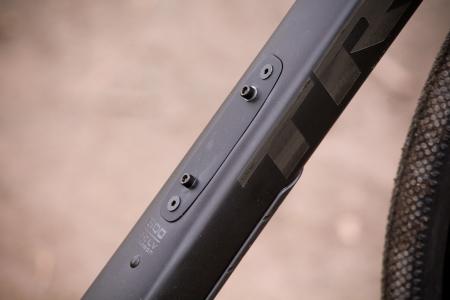
Tyre clearance is rated for 45mm tyres and Trek has designed the bike around 700C wheels – it doesn't recommend the use of 650B wheels. That's a shame given the rise of decent tyres and a growing interest in going super-fat for 'road plus' and gravel riding. The stock 35mm tyres look puny in the frame and fork, 45s look much better, and there's still acres of clearance.

Disc brakes are the de facto choice on gravel bikes, here with flat mount callipers and 12mm thru-axles at both ends. There's full internal cable routing, with the cables and rear brake hose all entering a single port on the down tube and concealed all the way to their prospective mechs and callipers, ideal for surviving muddy and wet riding.

The downside here, though, is the cables all splay out beside the frame far too much, which is both ugly and also sees your knees contacting them when riding out of the saddle. It could be done much better than this.
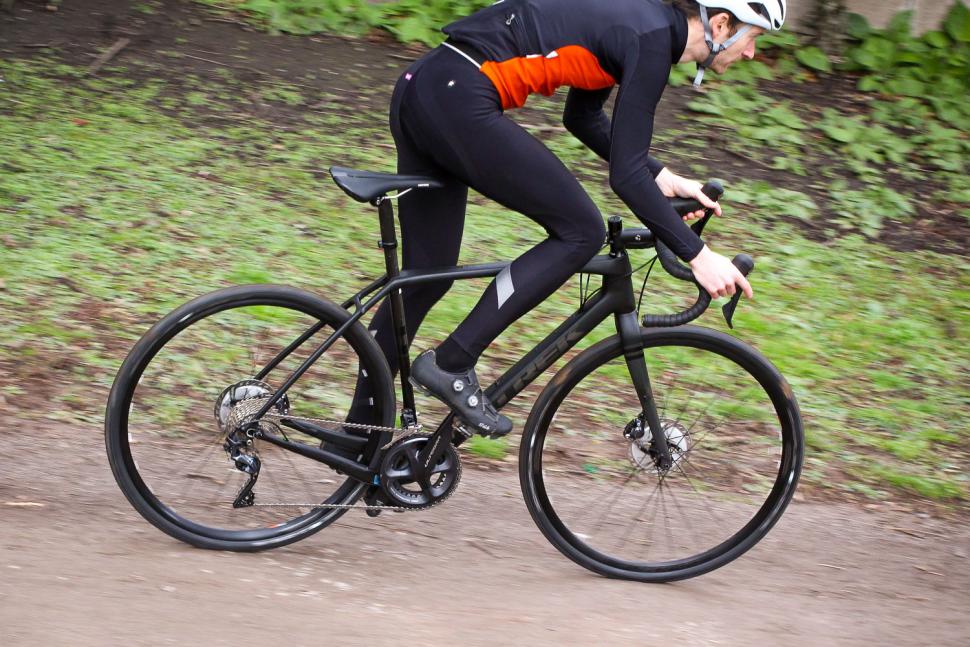
We've seen adjustable geometry on some gravel bikes (the Rondo Ruut , for example) but it's far from common. Trek has taken the Stranglehold adjustable dropouts from one of its mountain bikes which lets you slide the axles back and forth, adjusting the chainstays between 425 and 440mm. It also enables a single-speed conversion if you're that way inclined.
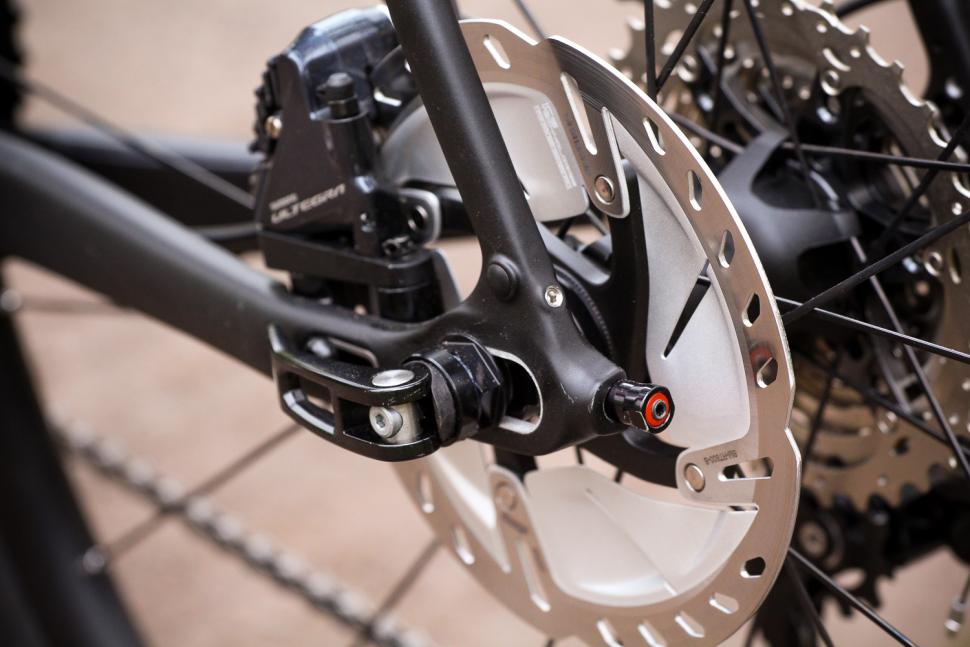
It's a relatively easy procedure but by no means a trailside alteration, requiring a few tools and 5-10 minutes of your time. It works well enough, though, and offers the opportunity to tailor the wheelbase length to suit – long for extra stability for a bikepacking adventure, short for playful riding – but the long bolts protruding from the frame in the longest setting are ugly in my opinion.
It could be something you change all the time, or, I suspect, it's a set-and-forget. I tried both settings and settled on the shorter option for most of my riding, as it's plenty stable enough in this setup.
Starting at £1,450 and topping out at £3,400, there are seven bikes and three women's models to choose from in the range. The pictured test bike is the range-topping SL 6 which combines an OCLV carbon fibre frame and fork with a full Shimano Ultegra mechanical groupset and lots of Bontrager equipment.

All bikes in the Checkpoint range use Shimano groupsets, and because the Japanese company doesn't (yet) make a dedicated gravel groupset, that means it's 2x11 setups across the range.
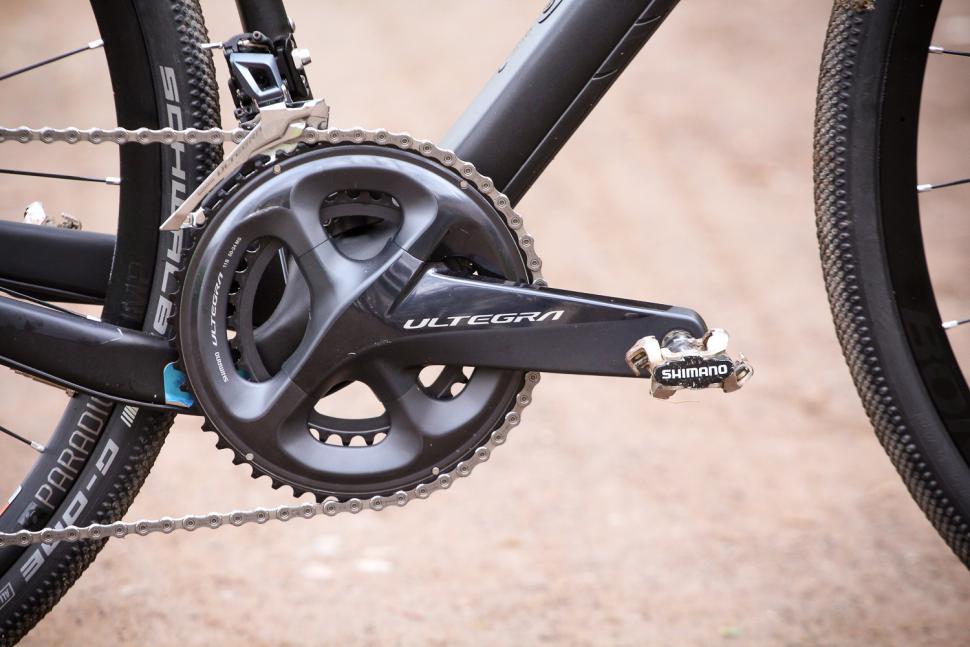
On this bike, that means a compact 50/34t chainset and 11-34t cassette, which would be fine were it a road bike, but the gearing was very often too tall for steep off-road climbs (even forcing me off on a number of occasions) and just not as simple to use as a 1x setup on the usually rapidly changing terrain of off-road riding. I'd like to see a sub-compact chainset like a 46/30 to lower the gearing range please Trek, and even a 1x option in the range would be nice.
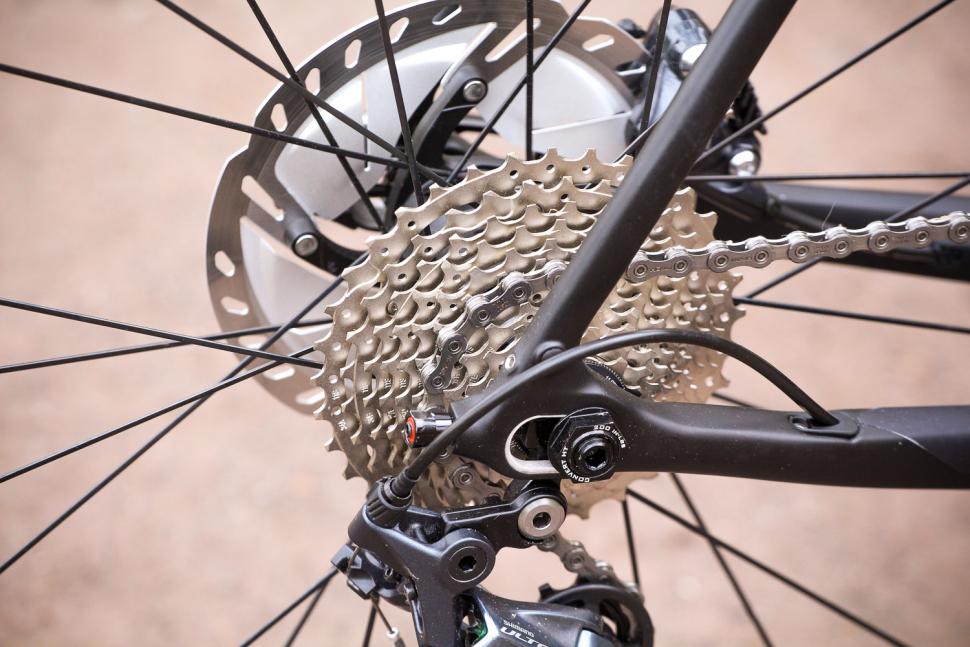
No complaints about the brakes, though, with the Dura-Ace-inspired Freeza disc rotors and hydraulic callipers providing plentiful braking power with easy one-finger control all of the time. They bedded in quickly and worked consistently in a range of conditions.
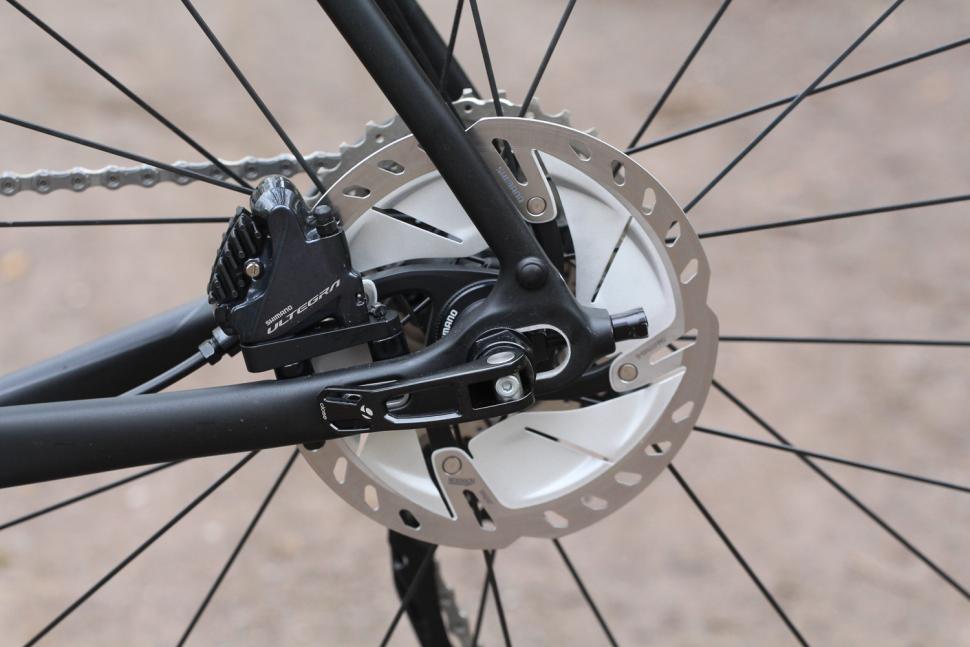
Wheels and tyres
Moving on to the rest of the equipment, and it's a full house from Bontrager, including the Paradigm Comp wheels. It's a 1,685g wheelset comprising aluminium hubs with Centerlock disc mounts and aluminium rims.
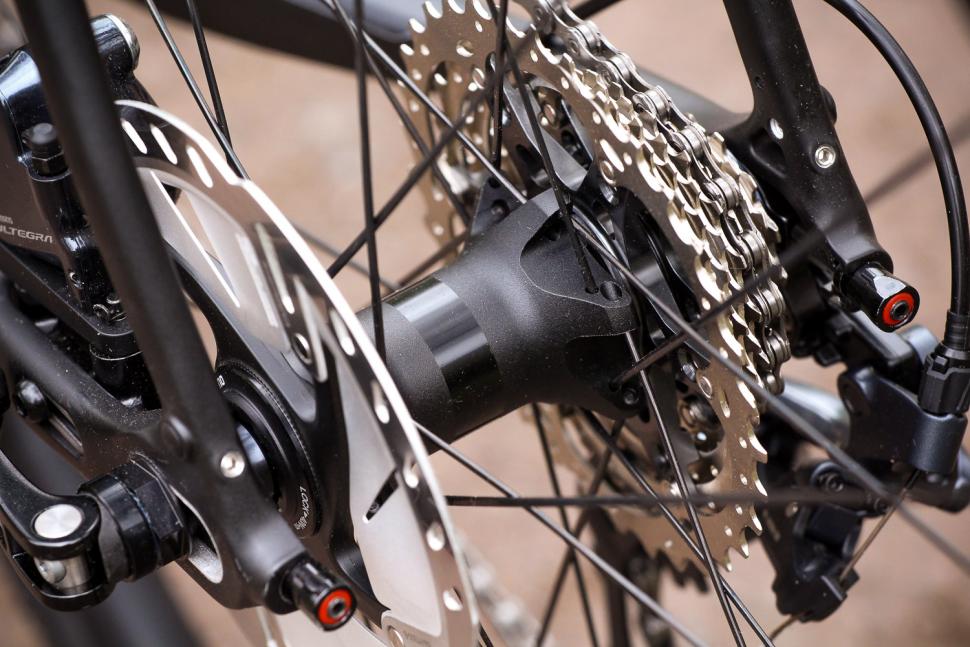
The rims are tubeless ready, but you'll need to invest in tubeless tape, valves and sealant should you want to ditch the inner tubes. I made the conversion and it worked well, with easy installation and good air retention. The rims measure 19.5mm internally, which is on the narrow side for the wider tyres the Checkpoint is designed for.

The 35mm Schwalbe G-One Allround tyres have had many thousands of positive words written about them, and they are excellent tyres. The low profile dimpled tread pattern is fast on the road and reasonably grippy for riding off-road, provided the trails are dry and not too loose.

If you're going to want to ride a lot of off-road trails and gravel paths in the UK, with all the mud we have to deal with, I'd consider a tyre upgrade. Something wider, for extra suspension, and grippier to prevent washouts on loose corners.
Finishing kit
The Montrose Comp saddle is a good shape with a pressure-relieving channel, and sufficiently padded for bumping across rutted tracks. The carbon seat mast it's attached to is easy to adjust for angle and fore-aft, with 20mm of offset.
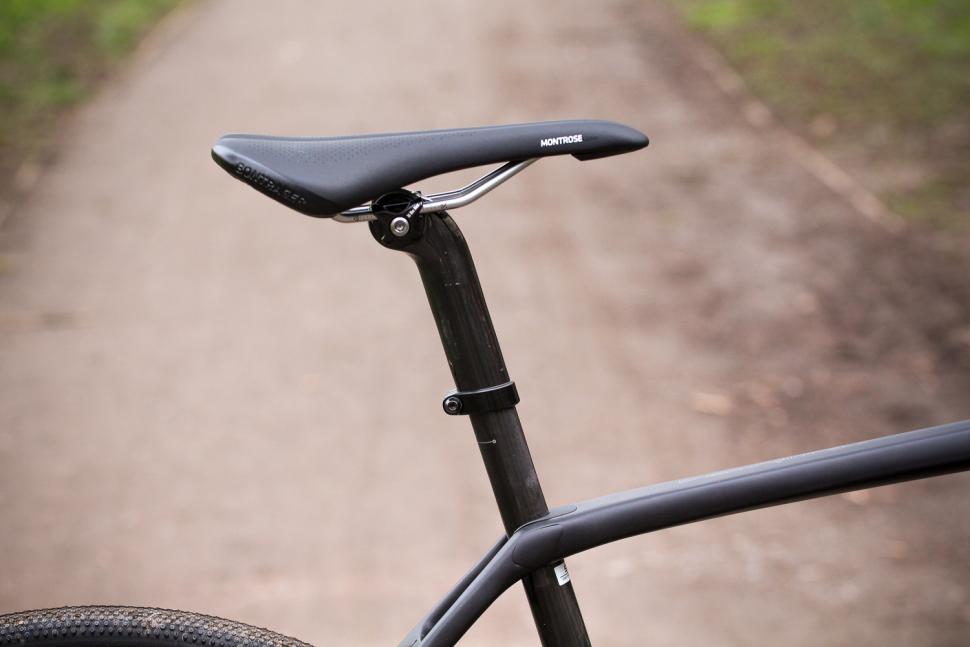
The IsoZone handlebar is made from butted aluminium (why there's no carbon bar on a bike of this price I don't know) with recesses for vibration-absorbing pads, providing extra cushioning underneath the bar tape. It's a nice touch and is a good alternative to double-wrapping bars and does provide a bit of extra comfort when riding on the tops.

The handlebar has a short reach and compact drops and is a nice shape for long rides. Some companies are dabbling with flared drops for increased leverage and control when riding technical descents, but for all but the most demanding tracks I was just fine with the lack of flare.
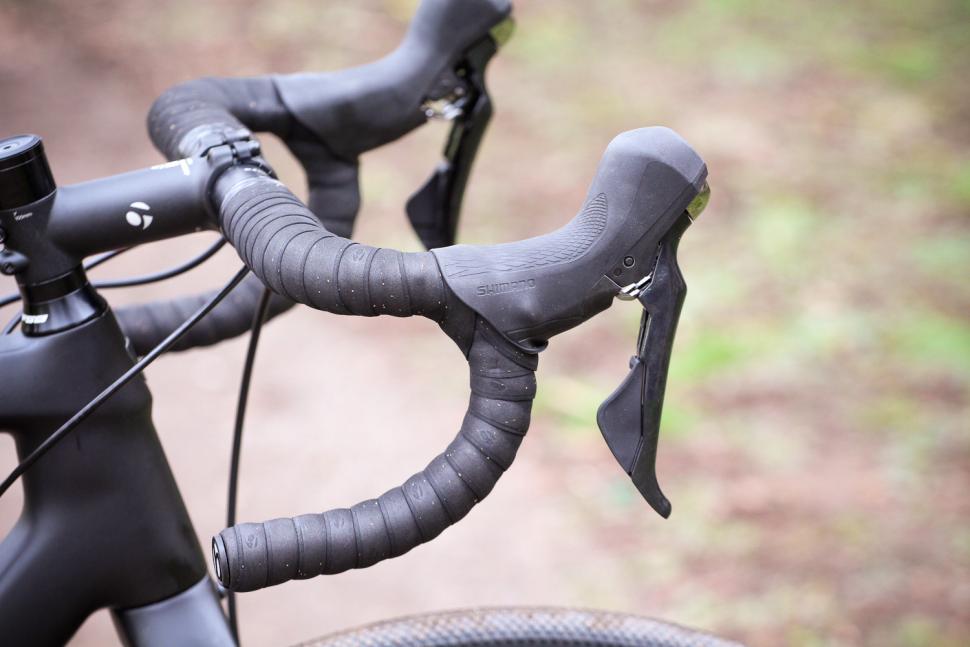
The Elite stem is aluminium and according to the Trek website comes with computer and light mounts, though I didn't receive those to test.

Built up with all this equipment, our 56cm test bike came to 8.97kg. That's a fair chunk heavier than the similarly priced Merida Silex 9000 at 7.98kg.
There's a lot of hype, buzz and excitement around the whole gravel and adventure bike thing right now, and it's clear that despite our lack of wide open gravel roads like they have in the US, here in the UK people are tapping into the versatility and capability of these bikes for a wide variety of uses, from exploring and adventure bikepacking to commuting.
This is reflected in the rapidly growing choice, but it's interesting that it's mostly the smaller brands really leading the way: the likes of 3T, Open, Lauf, Kinesis, Rondo and Bombtrack to name a few, the one exception being Specialized. These are interesting and exciting, with some really cool ideas about what a gravel bike should be.
> Buyer's Guide: 19 of the best gravel and adventure bikes
The Checkpoint just doesn't cut it. It does get a lot right: if you want a bike that is comfortable and provides space for wide tyres for mostly road riding, with lots of versatility whether for winter training and commuting or touring and bikepacking, the Trek is a good choice. But it's not the most capable bike when the going gets rough and bumpy.
Sure, the rear IsoSpeed decoupler works its magic, filtering out the harshness and giving your bum and back a smooth ride, but the front end is simply too harsh in comparison. Not fitting wider tyres and a lower range drivetrain shows either a failure to be bolder in the spec or a lack of appreciation for the demands of riding what is essentially a road bike off-road.
It's a shame. Trek is a company with a strong record in innovation, and it could have brought something truly compelling to the market and knocked everyone else out of the park. But it's played safe and the result is a bike that just lacks a bit of sparkle compared to some of the rivals I've already mentioned.
> Cyclo-cross bikes vs gravel/adventure bikes: what's the difference?
There's a lot to like – the stiff carbon frame packed with versatility, wide tyres, IsoSpeed rear – but a lot that holds it back, such as the stiff front end, too-narrow tyres and tall gearing. And that makes it hard for me to honestly recommend the Checkpoint.
If you are only going to ride it on the road and occasional smooth and flat dirt roads, the Checkpoint might be for you, but if you're looking for a highly capable gravel and adventure bike, there are better choices.
Sadly disappointing gravel bike debut from Trek, though fine if you want a fat-tyred road bike
road.cc test report
Make and model: Trek Checkpoint SL 6
Size tested: 56cm
About the bike
State the frame and fork material and method of construction. List the components used to build up the bike.
500 Series OCLV Carbon, Rear IsoSpeed, Stranglehold dropouts, tapered head tube, BB90, flat-mount disc brakes, rack mounts and hidden mudguard mounts, Control Freak, internal control routing, 12 mm thru axle, 3S chain keeper, Ride Tuned seatmast
Checkpoint carbon disc, carbon tapered steerer, flat-mount disc brakes, rack mounts, hidden mudguard mounts, 12 mm thru axle
Front Derailleur
Shimano Ultegra, braze-on
Rear Derailleur
Shimano Ultegra, Shadow design, 11-speed
Number of Gears
Shimano Ultegra, 11-speed
Shimano Ultegra, 50/34 (compact)
Bottom Bracket
Shimano HG800, 11-34, 11-speed
Shimano HG600, 11-speed
Shimano Ultegra flat mount hydraulic disc
Bontrager RL IsoZone VR-CF, 31.8 mm
Bontrager Elite, 31.8 mm, 7-degree, w/computer and light mounts
Integrated, cartridge bearing, sealed, 1-1/8in top, 1.5in bottom
Bontrager tape
Bontrager Paradigm Comp Tubeless Ready Disc, 12 mm thru axle
Schwalbe G-One Allround, aramid bead, TL Easy, 700 c 35 c
Bontrager Montrose Comp
Bontrager Ride Tuned carbon seatmast cap, 20 mm offset
Tell us what the bike is for
Trek says, "The Checkpoint SL 6 is a carbon gravel bike without limits. It's designed to take you to places you'd never reach on a standard road bike – like the mud-caked finish line of the world's greatest gravel races. A lightweight OCLV Carbon frame with gravel-smoothing IsoSpeed, a full Shimano Ultegra drivetrain and extra mounts for gear and accessories make the Checkpoint SL 6 a true gravel powerhouse and the best choice for serious all-road adventurers.
"A 500 Series OCLV Carbon frame with Rear IsoSpeed, a full Shimano Ultegra drivetrain, 700x35 Schwalbe TL-EX G-One Tubeless Ready gravel tyres, powerful flat mount hydraulic disc brakes and Bontrager Paradigm Comp Disc wheels with Shimano RT800 Ice-Tech FREEZA rotors and finned brake pads for reliability and extra stopping power. Plus, Control Freak internal cable routing, a carbon seatmast cap, Carbon Armour to protect the frame against debris, 12 mm thru axles and Stranglehold dropouts that make it easy to fine-tune your geometry or run singlespeed.
"The IsoSpeed decoupler cuts down on fatiguing bumps in gravel so you can wander more, reach new places and stay stronger for longer.
"This bike is exceedingly versatile and suited to a wide variety of riding styles, including gravel rides, bikepacking and daily commutes.
"Extra mounts on the top tube, seat tube and both sides of the downtube make it easy to carry extra gear and water.
"Massive tyre clearance means you can use tyres up to 45 c for extra traction and stability in any condition."
Frame and fork
Tell us about the build quality and finish of the frame and fork?
Very good build quality and attention to detail
Tell us about the materials used in the frame and fork?
Full OCLV 500 carbon fibre frame and fork.
Tell us about the geometry of the frame and fork?
Based on the Boone cyclo-cross bike but higher bar and lower bottom bracket for better all-road handling.
How was the bike in terms of height and reach? How did it compare to other bikes of the same stated size?
Fitted very well and was comfortable.
Riding the bike
Was the bike comfortable to ride? Tell us how you felt about the ride quality.
On the road, it was comfortable. Off-road, it wasn't so good.
Did the bike feel stiff in the right places? Did any part of the bike feel too stiff or too flexible?
The frame and fork are stiff, and it transfers power well when sprinting and climbing out of the saddle. But the front is too stiff when tackling off-road trails.
How did the bike transfer power? Did it feel efficient?
It transfers power well.
Was there any toe-clip overlap with the front wheel? If so
How would you describe the steering? Was it lively Nimble.
Tell us some more about the handling. How did the bike feel overall? Did it do particular things well or badly?
A nice balance between being stable but agile.
Which components had the most effect (good or bad) on the bike's comfort? would you recommend any changes?
I'd recommend swapping to wider tyres.
Which components had the most effect (good or bad) on the bike's stiffness? would you recommend any changes?
I'd also look to swap to a carbon handlebar.
Which components had the most effect (good or bad) on the bike's efficiency? would you recommend any changes?
The drivetrain
Tell us some more about the drivetrain. Anything you particularly did or didn't like? Any components which didn't work well together?
It's an excellent drivetrain, but the gearing is too tall for use off-road.
Your summary
Did you enjoy riding the bike? Some of the time.
Would you consider buying the bike? No
Would you recommend the bike to a friend? Probably not.
Use this box to explain your overall score
There are things to like about the Checkpoint but it needs lower gearing and wider tyres to make it more capable off-road than it is in stock form.
Overall rating: 6 /10
About the tester
Age: 31 Height: 180cm Weight: 67kg
I usually ride: My best bike is:
I've been riding for: 10-20 years I ride: Every day I would class myself as: Expert
I regularly do the following types of riding: road racing, time trialling, cyclo-cross, commuting, touring, mountain biking
Help us to fund our site
We’ve noticed you’re using an ad blocker. If you like road.cc, but you don’t like ads, please consider subscribing to the site to support us directly. As a subscriber you can read road.cc ad-free, from as little as £1.99.
If you don’t want to subscribe, please turn your ad blocker off. The revenue from adverts helps to fund our site.
Help us to bring you the best cycling content
If you’ve enjoyed this article, then please consider subscribing to road.cc from as little as £1.99. Our mission is to bring you all the news that’s relevant to you as a cyclist, independent reviews, impartial buying advice and more. Your subscription will help us to do more.
David worked on the road.cc tech team from 2012-2020. Previously he was editor of Bikemagic.com and before that staff writer at RCUK. He's a seasoned cyclist of all disciplines, from road to mountain biking, touring to cyclo-cross, he only wishes he had time to ride them all. He's mildly competitive, though he'll never admit it, and is a frequent road racer but is too lazy to do really well. He currently resides in the Cotswolds, and you can now find him over on his own YouTube channel David Arthur - Just Ride Bikes .
Add new comment
10 comments.

https://www.youtube.com/watch?v=YBYZQUa9SNk
- Log in or register to post comments
I've had my SL6 for about 3 months now. I've ridden a couple of races/fondos; one was a 60-mile all-gravel, and one a 90-mile mix of gravel and road. The bike's all-day comfortable, fast, stable, and fun to ride. In addition, as you point out, it's quite versatile; it works well as a commuter, road bike, gravel bike and gravel racer. I do agree that the front end is stiff, I'd also add that the bike's a bit on the heavy side.
On the other hand, I wonder about marking a bike down because of the tires and rear casette. I run a variety of tires on each of my bikes (road, cross, gravel and mountain) depending on conditions, use, time of year, etc. I also swapped out the 34T rear casette on the Checkpoint with a 36T. It shifts well and climbs like a dream. Again, swapping casettes is easy, and I've done the same on most of my other bikes depending on the use/ride.
What would be more useful would be a comparison to bikes in the same category/price range. Are similarly spec'd and priced bikes more compliant up front? More comfortable? Faster? More/less stable?
To be clear, i thought it was a great review, as my post makes clear. Its good to be unbiased and critical. My points after that were just part of normal debate. David Arthur's reviews are always a good, detailed read.
This review doesn't reflect international press on this particular bike and reminds me of a similar review a few Years back by Dave on the Trek Domane. I can only conclude that he's not a big Trek fan.
Echo wrote: This review doesn't reflect international press on this particular bike and reminds me of a similar review a few Years back by Dave on the Trek Domane. I can only conclude that he's not a big Trek fan.
The Domane SLR I gave four stars to and said was fun and fast, you mean? http://road.cc/content/review/187715-trek-domane-slr-6
Nothing to do with being a fan or not. Doesn't matter what the sticker on the downtube says
David Arthur @davearthur wrote: Echo wrote: This review doesn't reflect international press on this particular bike and reminds me of a similar review a few Years back by Dave on the Trek Domane. I can only conclude that he's not a big Trek fan.
No the model before that, the SLR was an improvement.
I ride gravel, I prefer to call it mixed terrain cycling and own a Checkpoint. So your somewhat negative report contradicts my own experience and that of others. James Huang's review on Cyclingtips and Ben Delaney's on Bikeradar. For the UK larger volume tyres and sub compact gearing make a lot of sense.
Agree with jterrier- pretty harsh review here... If I have understood correctly the main criticisms are it being overgeared, having narrow tyres and a harsh front end. It is compared unfavourably to bikes such as the Silex, Exploro, Up, Tripster AT, Ruut, Diverge, Silex and Hook. 3 of these are sold as framesets rather than full bikes so you can't compare the gearing or tyre choices there. Of the others the Silex has the same width tyres and even higher gearing (awarded 4.5 stars), the Hook has larger tyres but even higher gearing (awarded 4 stars), the Diverge has the same bottom gear and slightly wider (38c) tyres (awarded 4 stars). Only the Ruut actually has wider tyres and a lower bottom gear than the Checkpoint. The Checkpoint's clearances are actually bigger than eg the Diverge if you are choose to do a tyre switch yourself. Harsh front end is something else but the equipment criticisms seem inconsistent with previous road/off-road.cc reviews. It is nice to read reviews that are critical for once rather than just gushing about expensive bikes and it would be great if this level of criticism could be consistently applied to more future reviews.
Dislaimer- I have never ridden a Trek Checkpoint
rdmp2 wrote: Agree with jterrier- pretty harsh review here... If I have understood correctly the main criticisms are it being overgeared, having narrow tyres and a harsh front end. It is compared unfavourably to bikes such as the Silex, Exploro, Up, Tripster AT, Ruut, Diverge, Silex and Hook. 3 of these are sold as framesets rather than full bikes so you can't compare the gearing or tyre choices there. Of the others the Silex has the same width tyres and even higher gearing (awarded 4.5 stars), the Hook has larger tyres but even higher gearing (awarded 4 stars), the Diverge has the same bottom gear and slightly wider (38c) tyres (awarded 4 stars). Only the Ruut actually has wider tyres and a lower bottom gear than the Checkpoint. The Checkpoint's clearances are actually bigger than eg the Diverge if you are choose to do a tyre switch yourself. Harsh front end is something else but the equipment criticisms seem inconsistent with previous road/off-road.cc reviews. It is nice to read reviews that are critical for once rather than just gushing about expensive bikes and it would be great if this level of criticism could be consistently applied to more future reviews. Dislaimer- I have never ridden a Trek Checkpoint
I feel it was a fair and balanced review.
On the gearing, there's no place on a gravel/adventure bike for a 50/34t compact chainset in my mind, better would have been a 48/32t or 46/30t sub-compact chainset, but Shimano doesn't make one of those yet. With 1x you can more easily adjust the gears by swapping out the chainrings to suit your local terrain.
That's for riding proper off-road trails which usually means ruddy steep climbs in my experience. If you're sticking to flat roads and tracks though the gearing is probably fine
David Arthur @davearthur wrote: I feel it was a fair and balanced review. On the gearing, there's no place on a gravel/adventure bike for a 50/34t compact chainset in my mind, better would have been a 48/32t or 46/30t sub-compact chainset, but Shimano doesn't make one of those yet. With 1x you can more easily adjust the gears by swapping out the chainrings to suit your local terrain. That's for riding proper off-road trails which usually means ruddy steep climbs in my experience. If you're sticking to flat roads and tracks though the gearing is probably fine
Thanks for the reply- guess my post was a bit over the top... My point was just that 35c tyres and 1:1 bottom gear was deemed ok for the other bikes this was compared (unfavourably) to. I 100% agree 50/34t 11-34 is overgeared for off road (and on road for most).
This is a pretty forthright review (which is a good thing, definitely). Maybe it is intended as a gravel race bike, as opposed to a gravel endurance bike, for adventure. The gear range thing is quite subjective too; it does have a 1:1 gear ratio at the bottom, so it is only the same as if it was SRAM 1x with a 42t chainring. It sounds like the existing tires are a limit factor too, but obviously they can be changed.
Latest Comments
This is quite a good insight into the mindset of drivers whatever our views on it. I would wager that a massive majority of drivers would say that...
Historic bridge faces month-long closure after tractor smashes into it...
While the driving on show undoubtedly deserved 6pts+ and a healthy fine, we all know that often doesn't happen. Given the combination of a court...
Yep. I'd recommend.
Actually, 700C and 29ers are the same bead size. We've had mnt bikers convert to 28 - 30 mm tires to ride distance on roads. It is quite the look!
I always wondered why they had PSI ops units* ... clearly it's to exert pressure on the popular imagination....
I don't actually agree with de Vlaeminck's comments, let's wait until the end of a career to see where people are, Pogacar isn't that far off in...
“Unfortunately budgetary constraints mean that the previously envisaged cycle lanes cannot be included within this initial phase of this Victoria...
Can you share the location of this police station? I assume that it's open and you can go in, and there will be staff there. None of the stations...
BIB ... whats truck driving got to do with this....
Related Reviews
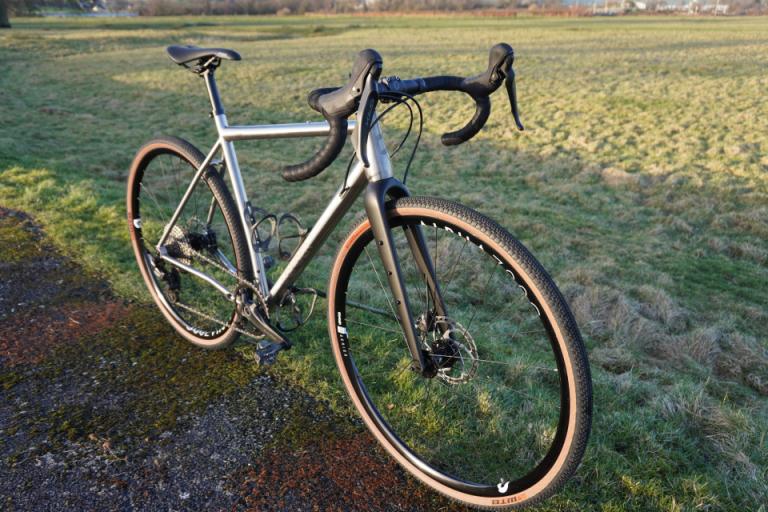
Sonder Sedona GRX1 gravel bike
A great-value titanium gravel bike for smoother riding and adventures.
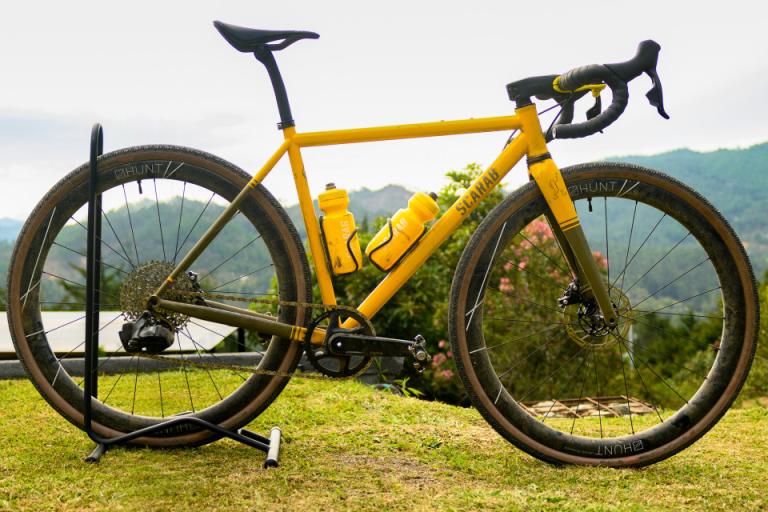
Scarab Apuna gravel bike
The Scarab Apuna is a custom steel bike that stands apart from the crowd.
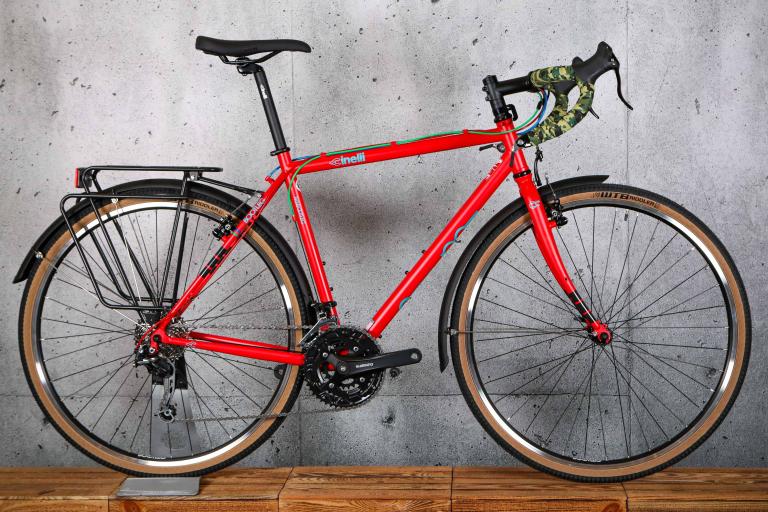
Cinelli HoBootleg
Comfortable to ride on all kinds of terrain, with a certain 'old school' charm, if pricey against the competition

Fearless Bikes Vulture Titanium frameset
A really good gravel bike for varied conditions but the most fun when the trails get technical and point downhill.

- April 30, 2024 | See Alexander, Nog, And Jake Deal With Q Jr’s Time Loop Shenanigans In ‘Sons Of Star Trek’ #2 Preview
- April 29, 2024 | Preview ‘Star Trek: Discovery’ Episode 506 With New Images. Trailer And Clip From “Whistlespeak”
- April 28, 2024 | Interview: ‘Star Trek: Discovery’ Writer Carlos Cisco On Unmasking The Breen And Revisiting The ISS Enterprise
- April 26, 2024 | Michael Dorn Wanted Armin Shimerman To Play The Ferengi That Worf Killed In Star Trek Picard
- April 26, 2024 | Podcast: All Access Gets To Know The Breen In ‘Star Trek: Discovery’ 505, “Mirrors”
CelebWatch: Shatner Gets “Weird” + Pine Goes To “Moscow” + Nimoy Wraps “Fringe” + Quinto On The “Margin”
| April 12, 2010 | By: Anthony Pascale 19 comments so far
Shatner pitches "Weird or What" in Cannes
We will find in May if William Shatner’s new sitcom Bleep My Dad Says gets picked up, but one Shatner show that is definitely going on the air is Weird or What , a new documentary series Shatner is co-producing an hosting. The show description press release make it sound a bit like Leonard Nimoy’s In Search Of :
in Weird or What? William Shatner will investigate and analyze all that is weird in the world, including everything from paranormal phenomena to weird and wonderful creatures, from medical oddities to mysterious disappearances, and bizarre natural disasters to mystical monster attacks.
The show has been sold to Discovery Channel in the US and History Channel in Canada. Today Shatner is at the MIP TV convention in Cannes today selling the show to the world. Variety reports that production company Cineflix has successfully sold the show to "nearly every territory". At the event Shatner described the show:
We’re looking at weird circumstances but we’re presenting them in a light-hearted, jaunty way. We’re not taking ourselves too seriously.
Chris Pine headed to Moscow as Jack Ryan
Last year Chris Pine, the new Kirk, was tapped as the new Jack Ryan, to head up another big Paramount franchise. New details have emerged on this next film based on the Tom Clancy character. Pajiba reports the following story synopsis for the next Jack Ryan film (now with the working title of "Moscow"):
The movie will pick up with the Jack Ryan not long after his stint in the Marines, before he’s joined the CIA, while he’s a Wall Street stock broker, an occupation that will play heavily into the script. In the Clancy novels, Jack Ryan was a successful financial analyst in Baltimore for Merrill Lynch. In the new movie, he will have transplanted to Moscow to continue his financial advising, not for Merill Lynch (which has been absorbed by Bank of America), but for a billionaire employer. It is that billionaire employer who eventually sets Jack Ryan up to take the fall for terrorist plot designed to collapse the U.S. economy. After that, Ryan must race against time to clear his name, reveal the terrorist plot, and save his wife, who has been taken hostage by the billionaire employer.
No word yet on when "Moscow" will go in front of cameras or be released, but probably following Pine’s work on the next Star Trek .
Nimoy’s last day as an actor? + honored as space inspiration
Spock Prime, Leonard Nimoy has recently stated he is ready to back into acting retirement. This would mean his last job as an actor would be reprising his role as William Bell in the season finale JJ Abrams’ Fringe . And yesterday, Nimoy tweeted " Finishing work on Fringe today. Really good experience. The two parter will air in May." Today he tweeted that his back home. Speaking of Twitter, in just four days TheRealNimoy has picked up almost 33,000 followers.
But Mr. Nimoy is still out and about. On Thursday Leonard is being honored by the Space Foundation at the National Space Symposium in Colorado. Nimoy is being presented with the Douglas S. Morrow Public Outreach award for being an inspiration to people around the world "to explore the wonders of science, space, and technology." And a reminder, next Friday the original Spock is headed to the Vulcan, Alberta, Canada (the official Star Trek capital of Canada) to unveil a bust of himself, and then he is off to the Calgary Entertainment Expo for the weekend.
Quinto on NYSE floor
Finally we come to the new Mr. Spock, Zachary Quinto. The actor is currently in New York filling out his resume as a producer an actor in Margin Call , a film set in the world of the stock market. Last week Zach tweeted this pic of himself with his Before the Door production company partners.
While he has been in New York, Quinto has been a frequent Twitterer, sending gems like this one last Thursday:
the t-shirt i was wearing today smelled. so i bought a new t-shirt. now it smells. already. why you got to be so smelly t-shirts?
But no worries, Zach was cleaned up all nice by the next night…
Jeez, that photo of Nimoy is fierce! :D
I cant wait to see nimoy and the shat at vegas will miss them when their gone
Shats new show sounds fun–long as they dont make fun of believers cuz that could be bad n sad–
Like a jaunty “In Search Of…”
If I see one more word with quotes around it I’m going to “scream”.
Has Shatner seen Star Trek 11 yet?
How really cares. I don’t. maybe I did at one point. But I don’t now. Let it go. For crying….out….loud
“We’re not taking ourselves too seriously.”
In contrast to some of today’s Hollywood actor wannabees, Shatner can afford to not take himself too seriously. :)
Nimoy looks like an old, and very wise Spock on that photo. Acting retirement surely would be a waste of material…
#6 No, he’s busy having a life. :))
The two shows should be combined to form a show called “Weird Fringe”, and in the first show William Shatner could focus on mysteries of Mr.Spock’s bowl haircut.
Wow whats up with Quinto’s nerdball galsses….First we see a hobo Spock and now dork Spock.
ZQ’s follow up tweet is hilarious!
Nimoy always look cool…kinda badass…you wish Fringe would throw a evil Spock beard on him! Shat looks kinda pudgy…a jolly old type… I was really hoping Mr Nimoy would make it in the new MI movie as Paris…maybe a evil Paris with a beard!
Jack Ryan before Star Trek or after???
From everything I’ve seen of Ben Affleck, he’s pretty impressed with himself. Chris Pine will be 1000 times better than him.
Quinto needs a fashion adviser.
I think Quinto should do a music video as Bilbo Baggins
Alec Baldwin was a great Jack Ryan. Tough act to follow (and I’m a big Ford fan).
16. Yeah! xD lol
Quinto is always dressed stylish, cool and modern- I love it. Zach, just rub some patchouly on yourself and get back to work please!!!!!!!! And Bleep Jack Ryan!
Checkpoint Hostel
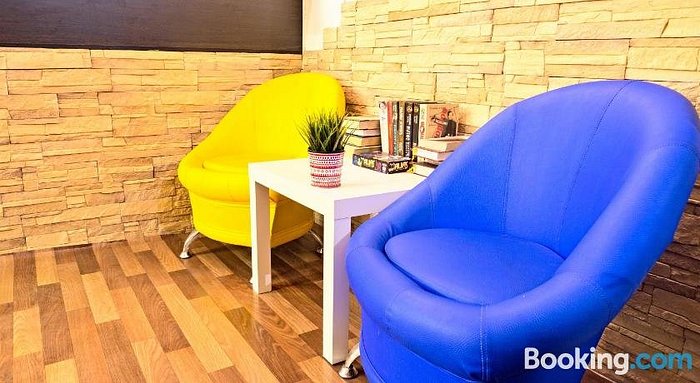
View prices for your travel dates
- Excellent 0
- Very Good 0
- English ( 0 )
Own or manage this property? Claim your listing for free to respond to reviews, update your profile and much more.
CHECKPOINT HOSTEL - Reviews (Moscow, Russia)
- Checkpoint SL 6

Stranger In Moscow › Customer reviews
Customer reviews.

Stranger In Moscow
Customer Reviews, including Product Star Ratings help customers to learn more about the product and decide whether it is the right product for them.
To calculate the overall star rating and percentage breakdown by star, we don’t use a simple average. Instead, our system considers things like how recent a review is and if the reviewer bought the item on Amazon. It also analyzed reviews to verify trustworthiness.
Top positive review
Top critical review
There was a problem filtering reviews right now. Please try again later.
From the united states, there was a problem loading comments right now. please try again later..
- ← Previous page
- Next page →
- Amazon Newsletter
- About Amazon
- Accessibility
- Sustainability
- Press Center
- Investor Relations
- Amazon Devices
- Amazon Science
- Sell on Amazon
- Sell apps on Amazon
- Supply to Amazon
- Protect & Build Your Brand
- Become an Affiliate
- Become a Delivery Driver
- Start a Package Delivery Business
- Advertise Your Products
- Self-Publish with Us
- Become an Amazon Hub Partner
- › See More Ways to Make Money
- Amazon Visa
- Amazon Store Card
- Amazon Secured Card
- Amazon Business Card
- Shop with Points
- Credit Card Marketplace
- Reload Your Balance
- Amazon Currency Converter
- Your Account
- Your Orders
- Shipping Rates & Policies
- Amazon Prime
- Returns & Replacements
- Manage Your Content and Devices
- Recalls and Product Safety Alerts
- Conditions of Use
- Privacy Notice
- Consumer Health Data Privacy Disclosure
- Your Ads Privacy Choices

- Rider Notes
2024 Trek Checkpoint SL 6 AXS

A carbon frame gravel bike with upper mid-range components and hydraulic disc brakes. Compare the full range
Manufacturer Price
Checkpoint SL 6 AXS
In Stock: 49, 52, 54, 56, 58, & 61cm
Biloxi Bicycle Works
For This Bike
View more similar bikes →
Based on frame geometry and build specs.
A bike with lower gearing will be easier to ride up steep hills, while a higher top end means it will pedal faster down hills.
Similar Bikes
(descending)
Add custom gearing
Based on build material and quality level of the frame, fork, wheelset, groupset, suspension system, and more.
Compare the full Checkpoint model range
5'1" – 5'5"
5'3" – 5'7"
5'5" – 5'9"
5'8" – 6'0"
5'10" – 6'2"
6'0" – 6'4"
- 5'7", size 54, Fits large
- 5'10", size LG, Just right
- 5'9", size 52cm, Just right

Jan 2024 · Calvin Zajac
Is Trek’s mid-range gravel machine better than its top-end twin? The Checkpoint SL 7 offers adventure on a (slightly) lower budget, but is that enough to beat the competition in our adventure gravel bike group test?
Outstanding versatility
A lot of practical features
High-quality design, boasting first-class workmanship
No chainstay protector
Read Review
Oct 2023 · Guy Kesteven
Trek’s Checkpoint has unique progressive geometry and scissor frame features and all the mount points you could want. But is it a multi-surface, multi-mission master or a complicated compromise?
IsoPulse Decoupler is a significant ride smoother
Well balanced road or rough handling
Efficient speed on all surfaces
SL 6 model is a real performance for price sweet spot
Saddle is a bit squishy on longer rides
Many mounts mean slightly more mass
Controls go through the headset
Non removable front mech tab
Rough rear hub

Oct 2022 · Mat Brett
Get all the details of this fiery red gravel/adventure bike with Trek’s gravel-smoothing IsoSpeed

Sep 2022 · Josh Ross
The Trek Checkpoint is the only bike you need to take you on every adventure
SRAM Rival AXS is the perfect groupset for an all-arounder
Mud-guard mounts
Mounting points for every bag you can think of
Non-proprietary seat-post provides options
Internal storage is convenient
Downtube protection eases worry
Threaded bottom bracket
Ideal all-around gearing
Short stem for added stability means handlebar/knee interference
Lacks included protection for the chain stay
Detail behind the fork steerer collects water and is difficult to clean

Aug 2022 · Sam Challis
Neat tricks combined with smart design equals good fun. The Checkpoint SL is the sweetspot in Trek's gravel range
Effective geometry
Sensible spec
Neat extra frame features
Comfortable
Non-removable front derailleur mount
Headset cable integration design isn’t watertight

May 2022 · Jack Luke
A highly versatile gravel bike that's comfortable and decent value too
Notably comfortable ride
Very versatile
Inelegant seat-clamp design
Occasionally rattly
Feb 2022 · Betsy Welch
Rockwell's bike pays tribute her home, and of eras gone by.

Updated geometry and differentiated models for speed, adventure, and all purpose riding

Last updated April 28

IMAGES
VIDEO
COMMENTS
Trek Checkpoint SL6 eTap long-term review: Simple done brilliantly The Trek Checkpoint is the only bike you need to take you on every adventure By Josh Ross. published 9 September 2022
The Trek Checkpoint SL 6 eTap is a gravel bike that combines a smooth carbon frame, a wireless drivetrain and a versatile geometry. Find out how it performs on and off the road in our review.
Trek Points
Trek Checkpoint SL 6 AXS review - all-round gravel machine ... As the model name suggests, the SL6 gets SRAM's AXS wireless gear set up. It's the lower/mid tier Rival group with an alloy crank (the SL7 AXS gets Force and carbon wheels) with a 40T chainring matched to a 10-44 tooth XPLR cassette. The bottom bracket is the latest T47 standard.
Max tire size: 700C x 45mm. Weight (Lg): 19.7 pounds (8.94 kg) The Checkpoint SL is Trek's take on a carbon high performance drop bar bike with dual front chainrings and clearance for 45mm tires on 700c wheels. It's available as a frameset or with Shimano Ultegra or 105, which are the SL6 and the SL5 respectively.
The Trek Checkpoint SL comes in three flavours: the SL 5 (£3,700) is a Shimano GRX RX810 build, the SL 7 eTap (£6,400) has SRAM Force eTap AXS components, while this SL 6 eTap (£4,450) has a SRAM Rival eTap AXS groupset with a 40T chainring and a 10-44 12-speed cassette. If you're looking for something cheaper, check out the best gravel ...
Trek Checkpoint SL6 eTap long-term review: Simple done brilliantly. Sep 2022 · Josh Ross. The Trek Checkpoint is the only bike you need to take you on every adventure. ... Trek Checkpoint SL 6 review. Aug 2022 · Sam Challis. Neat tricks combined with smart design equals good fun. The Checkpoint SL is the sweetspot in Trek's gravel range.
The 2019 Trek Checkpoint SL6 is a gravel-bike that has earned the American-muscle badge here at our test HQ. Trek's confident approach to fabricating bike technology, has yielded a gravel bike unframed in its ride style. It might be the many-few cyclists that passed by, bawling "gravel-bike, gravel bike!" that suggested this bike has ...
Trek Checkpoint SL6 eTap long-term review: Simple done brilliantly. Sep 2022 · Josh Ross. The Trek Checkpoint is the only bike you need to take you on every adventure. Highs. SRAM Rival AXS is the perfect groupset for an all-arounder. Mud-guard mounts. Mounting points for every bag you can think of.
2019 TREK Checkpoint SL6 Review. Mar 2020 · Dale Tiessen. Out of the saddle putting down maximum power into the Checkpoint, it feels like a nice carbon road bike. Read Review. Trek Checkpoint AL 4 review. Feb 2020 · Robin Wilmott. All-road versatility with refined road manners for a fine riding machine.
The Checkpoint SL6 is a well appointed bike with a Cdn MSRP of $4999. Carbon frame and Ultegra groupo - this was really my starting point and floor of what I wanted. I was coming off a full DuraAce bike and was hesitant to give up any more. The SL6 comes with compact cranks and 11-34 cassette.
Trek offers the Checkpoint in aluminium and carbon fibre variants. This range-topping SL 6 model is made from OCLV 500 Series carbon fibre, with a size 56cm weighing a claimed 1,240g, and 470g for the fork. On the scales, the entire bike weighs 8.97kg. It's a well-appointed frame with some neat details.
The final word. A carbon gravel bike built for the longest days, roughest roads, and biggest adventures. It's light, fast, comfortable, and spec'd with high-end parts that perform even in the most rugged terrain, like an advanced wireless electronic drivetrain for lightning fast shifts (even under load) and less maintenance.
Model 601583. Retailer prices may vary. Checkpoint SL 6 is a carbon gravel bike without limits. It's designed to take you places you'd never reach on a standard road bike—like the mud-caked finish line of the world's greatest gravel races. A lightweight OCLV Carbon frame with gravel-smoothing IsoSpeed, a Shimano GRX drivetrain, and extra ...
2019 TREK Checkpoint SL6 Review. Mar 2020 · Dale Tiessen. Out of the saddle putting down maximum power into the Checkpoint, it feels like a nice carbon road bike. Read Review. Trek Checkpoint SL6 review. May 2019 · Robin Wilmott. Although not the most rugged explorer, the Checkpoint SL6 will go almost anywhere, quickly and in comfort.
Today we have a special Kirk and Spock edition of CelebWatch, or make that Kirks and Spocks. We have William Shatner selling his new "Weird" show Cannes, Leonard Nimoy wrapping on Fringe (and ...
Best Historical Fiction of 2016 [SHOWING SLIDE 3 OF 12] " A masterly encapsulation of modern Russian history, this book more than fulfills the promise of Towles' stylish debut, Rules of Civility (2011)." Sentenced to house arrest in Moscow's Metropol Hotel by a Bolshevik tribunal for writing a poem deemed to encourage revolt, Count Alexander ...
Checkpoint Hostel, Moscow: See traveler reviews, 5 candid photos, and great deals for Checkpoint Hostel, ranked #804 of 1,162 specialty lodging in Moscow and rated 3 of 5 at Tripadvisor.
Checkpoint SL 6. Model 585896. Retailer prices may vary. Checkpoint SL 6 is a carbon gravel bike without limits. It's designed to take you places you'd never reach on a standard road bike—like the mud-caked finish line of the world's greatest gravel races. A lightweight OCLV Carbon frame with gravel-smoothing IsoSpeed, a full Shimano Ultegra ...
Model 601583. Retailer prices may vary. Checkpoint SL 6 is a carbon gravel bike without limits. It's designed to take you places you'd never reach on a standard road bike—like the mud-caked finish line of the world's greatest gravel races. A lightweight OCLV Carbon frame with gravel-smoothing IsoSpeed, a Shimano GRX drivetrain, and extra ...
How customer reviews and ratings work Customer Reviews, including Product Star Ratings help customers to learn more about the product and decide whether it is the right product for them. To calculate the overall star rating and percentage breakdown by star, we don't use a simple average.
The 2023 Trek Checkpoint SLR 9 eTap in review - Our big gravel race bike shootout. Jun 2023 · Calvin Zajac. ... Trek Checkpoint SL6 eTap long-term review: Simple done brilliantly. Sep 2022 · Josh Ross. The Trek Checkpoint is the only bike you need to take you on every adventure.
Trek Checkpoint SL 7 AXS - Put to the test in our big adventure gravel bike shootout ... Trek Checkpoint SL 6 AXS review - all-round gravel machine. Oct 2023 · Guy Kesteven. ... Trek Checkpoint SL6 eTap long-term review: Simple done brilliantly. Sep 2022 · Josh Ross. The Trek Checkpoint is the only bike you need to take you on every ...